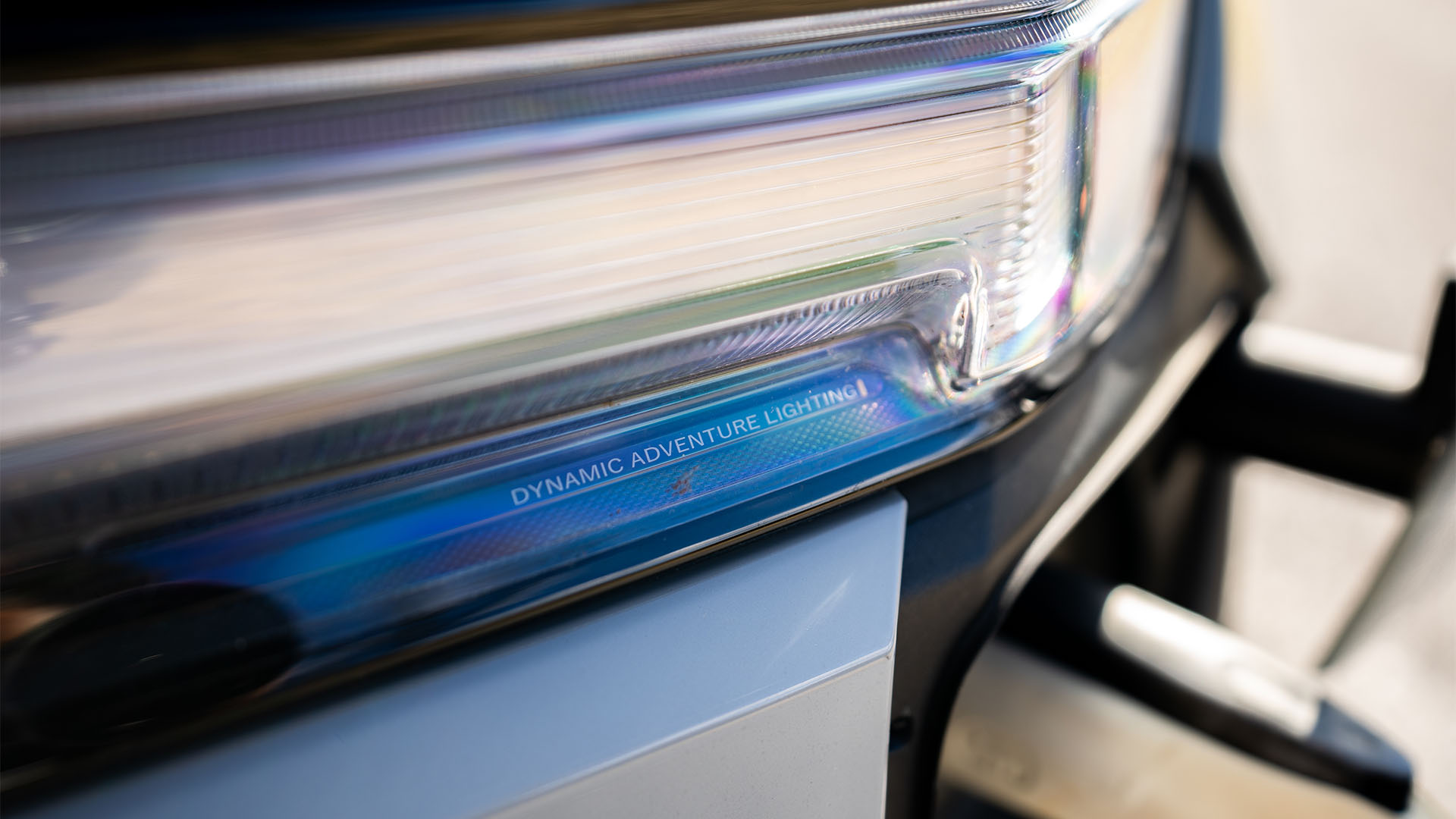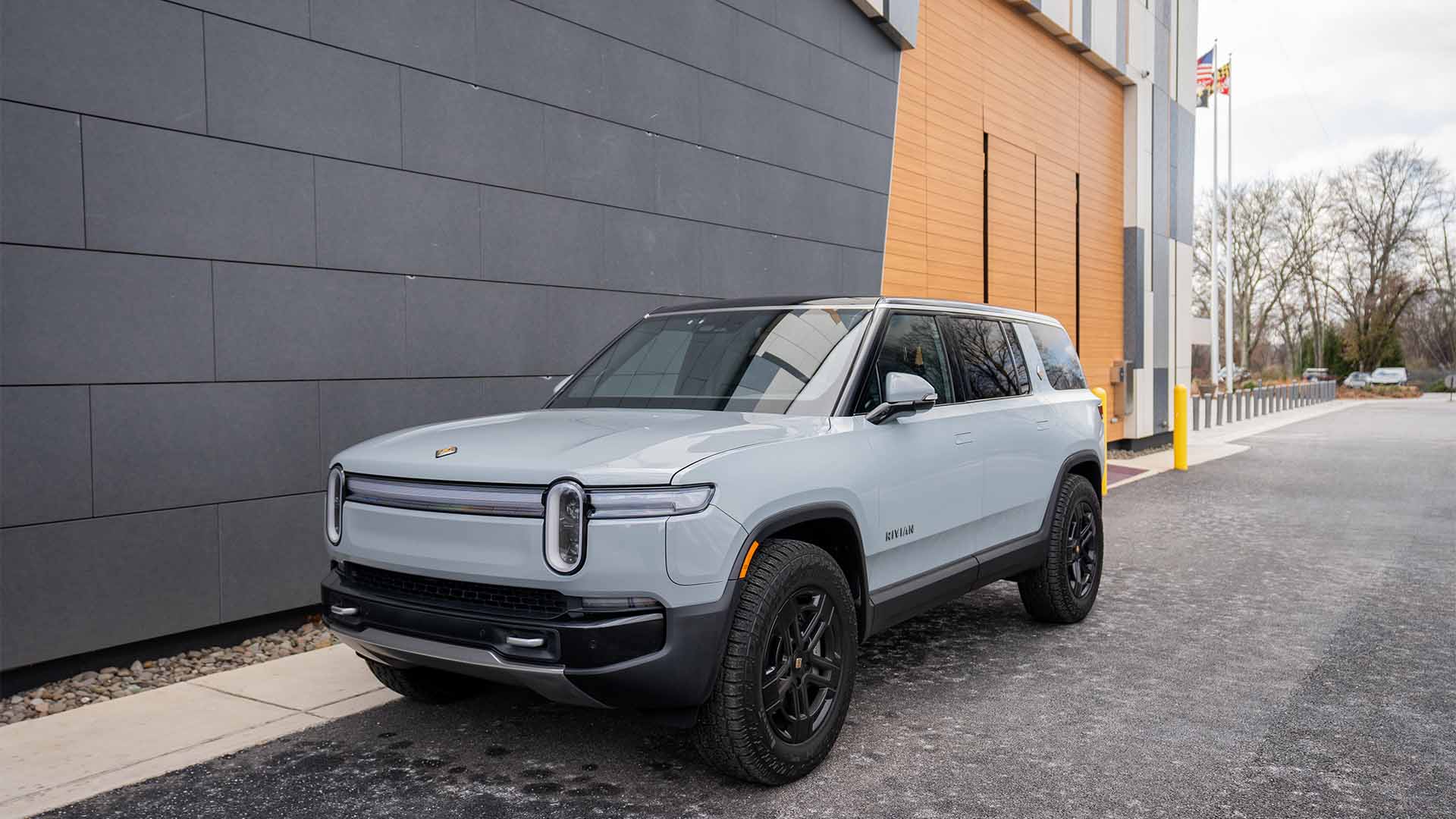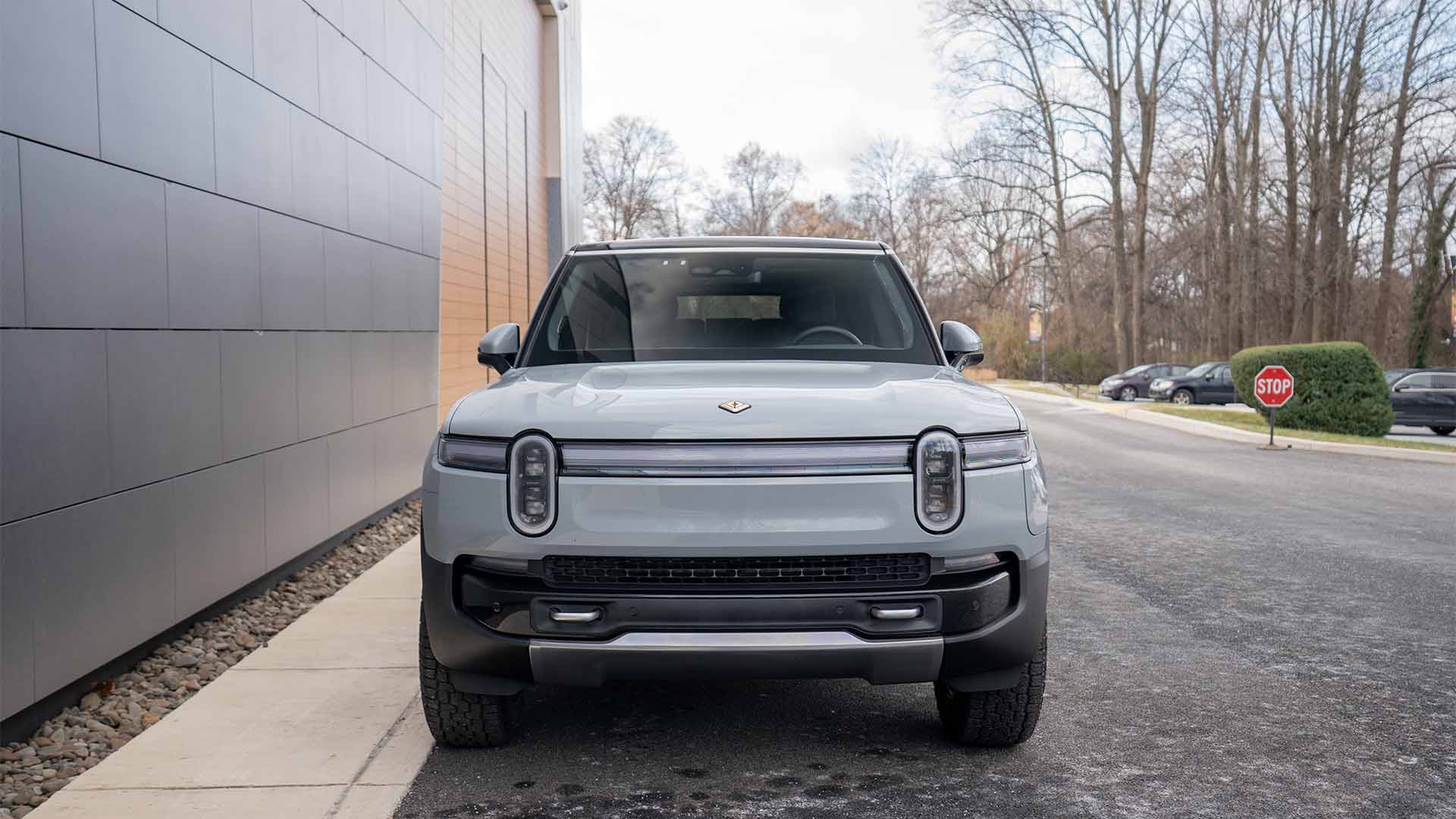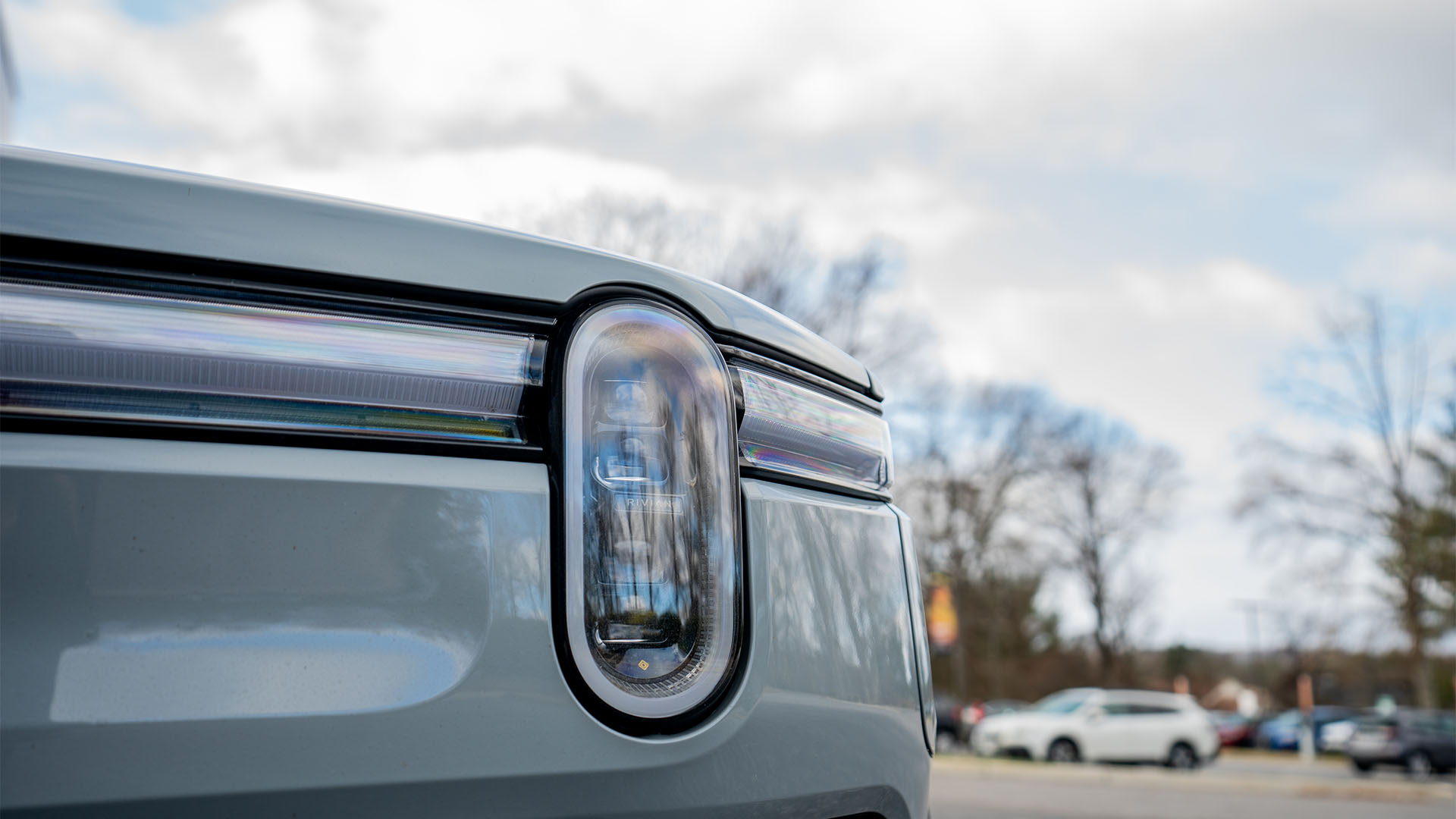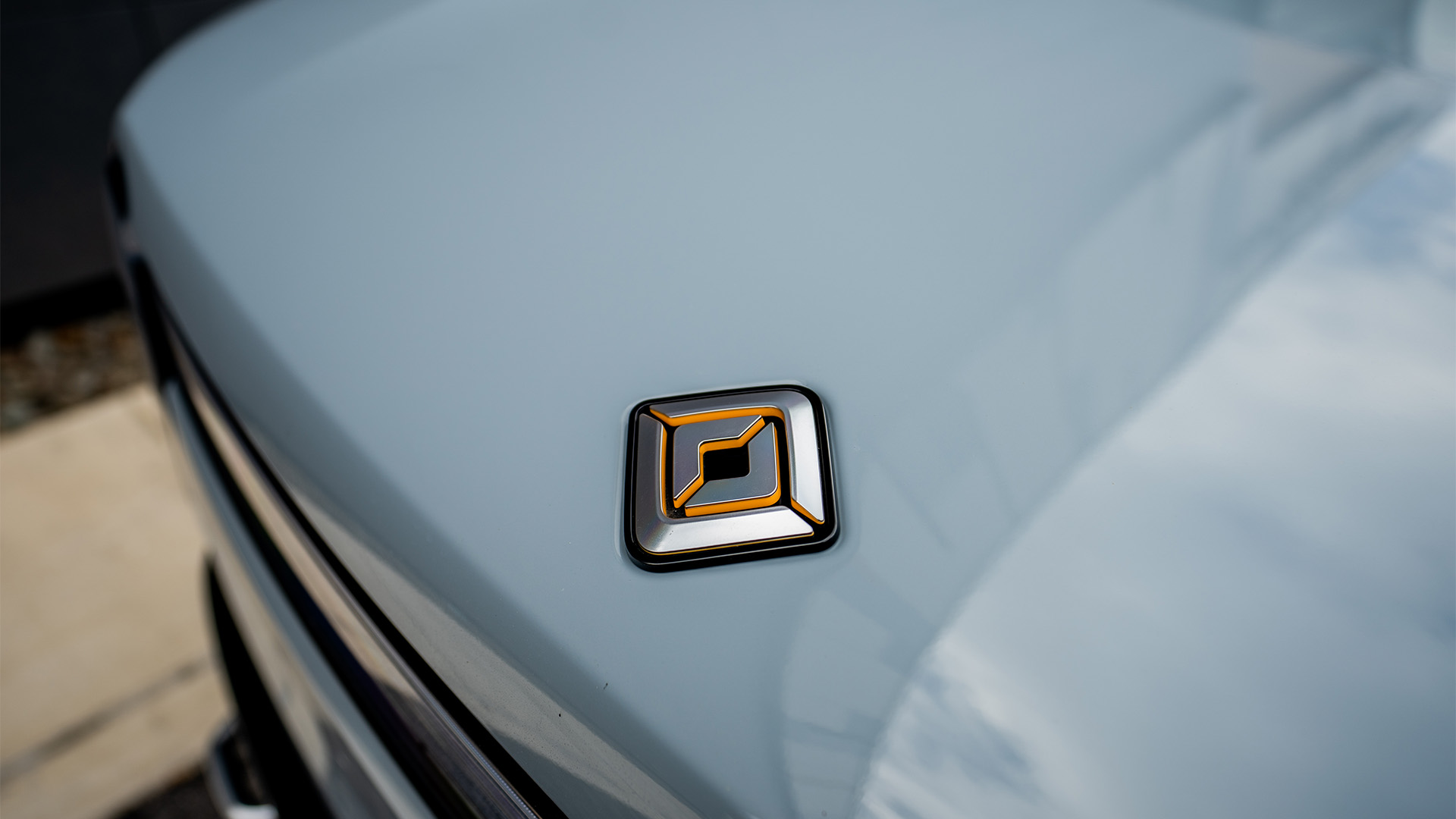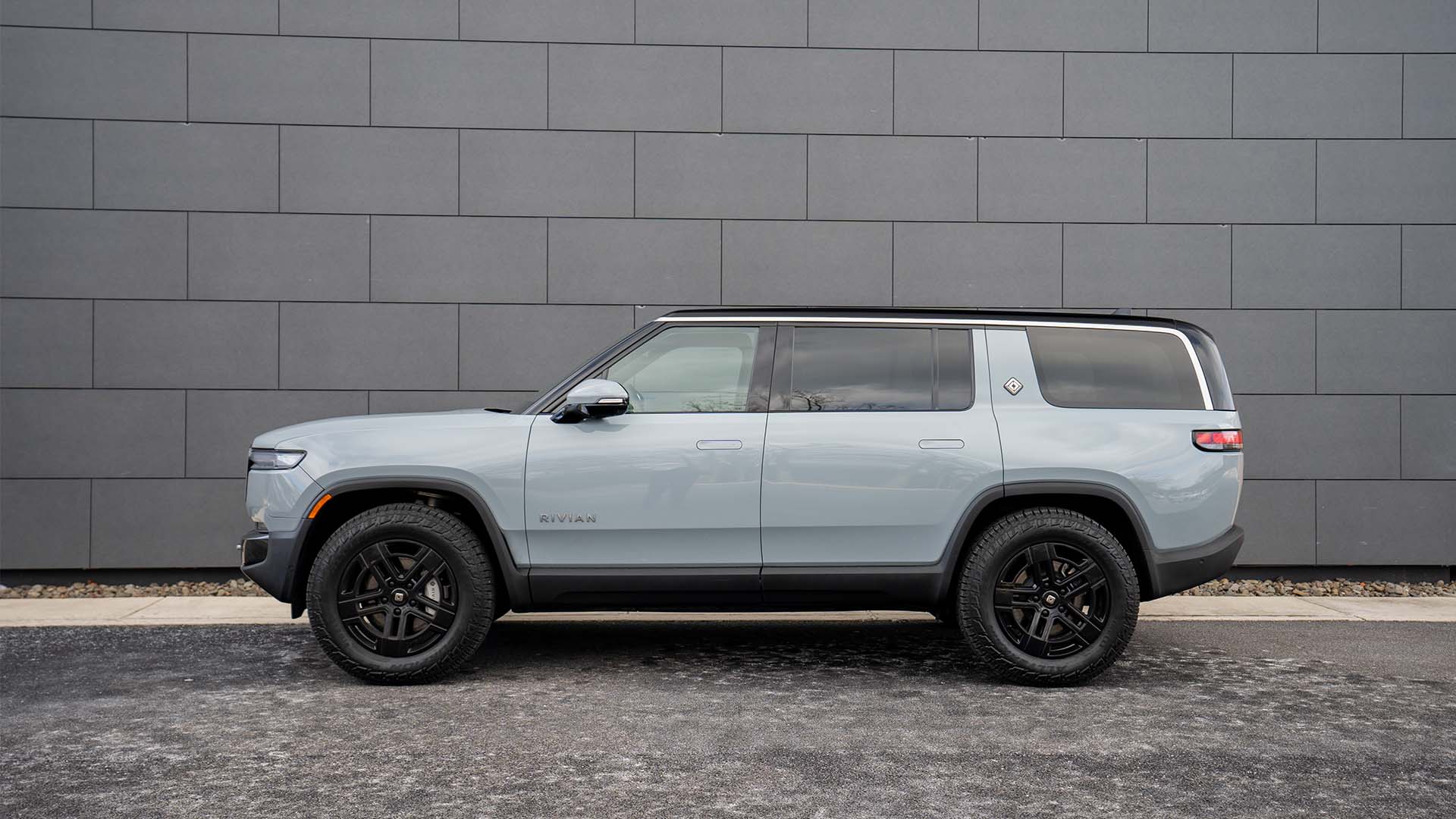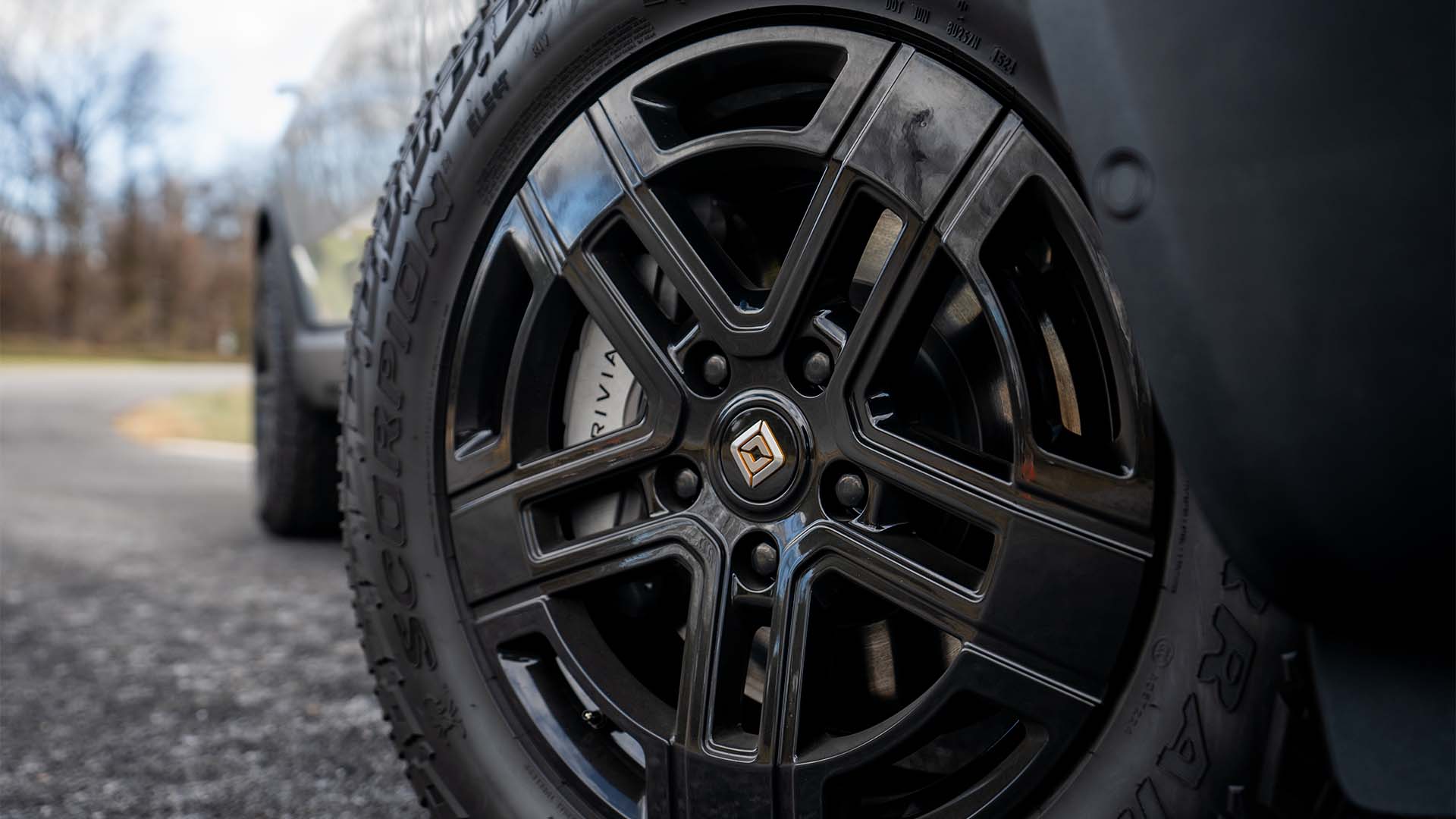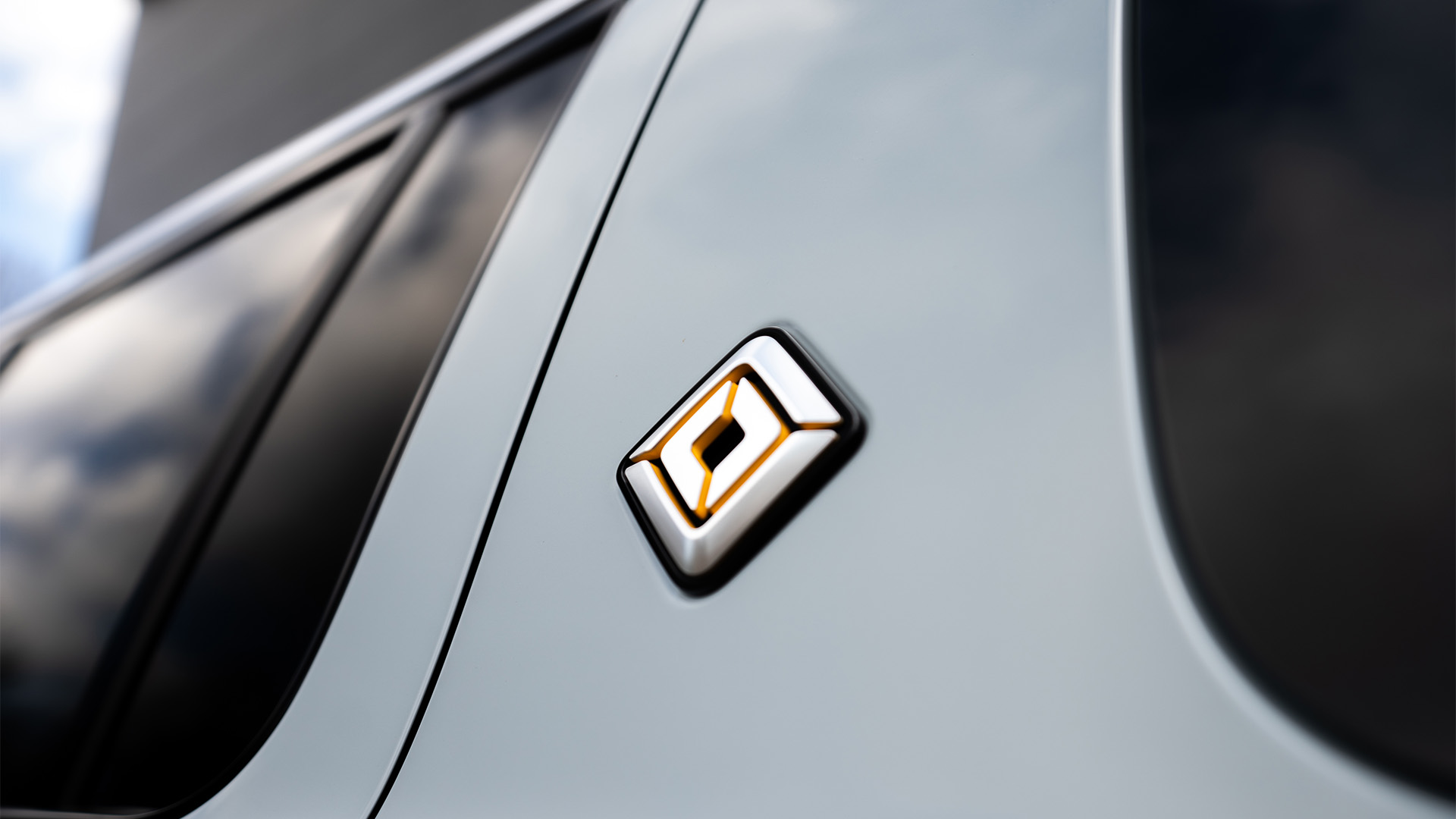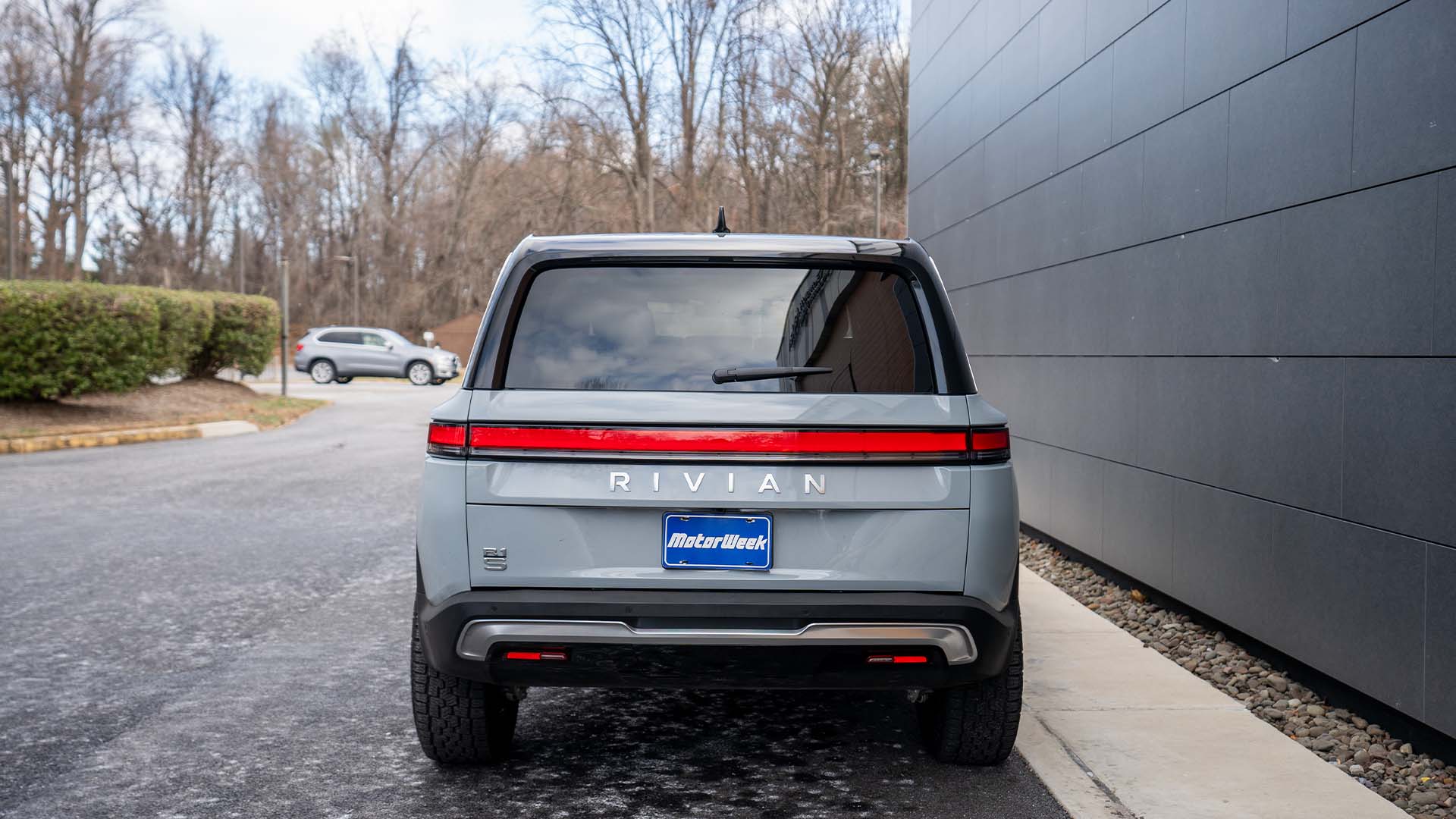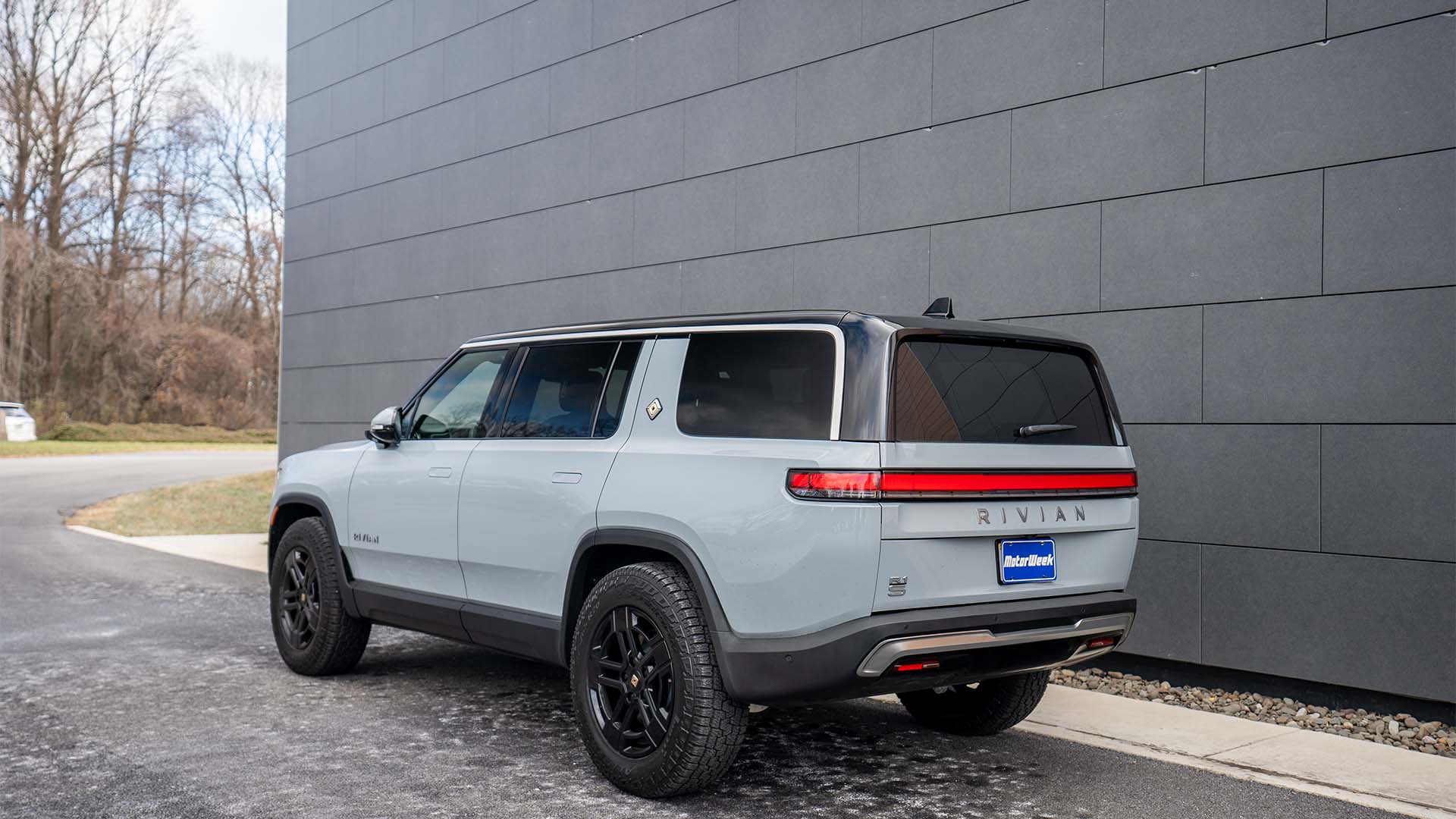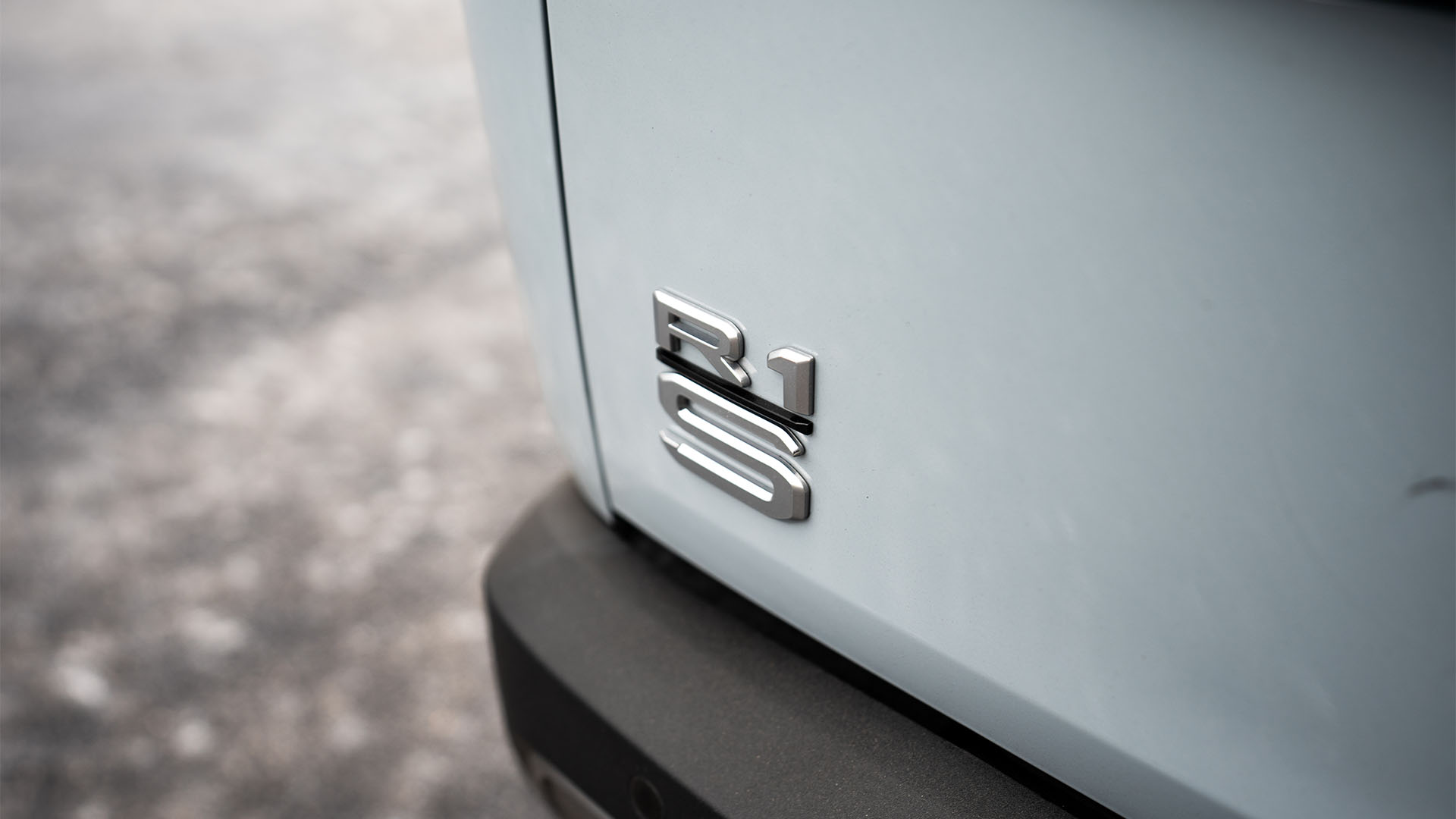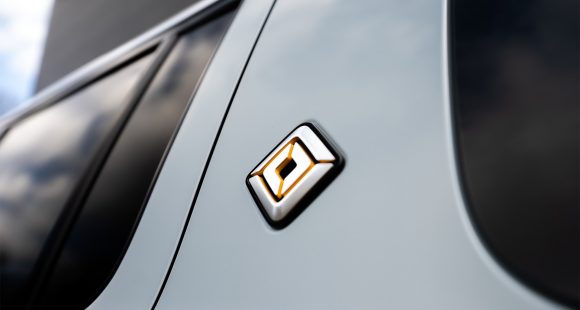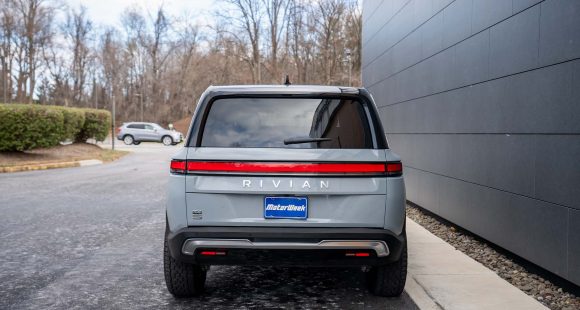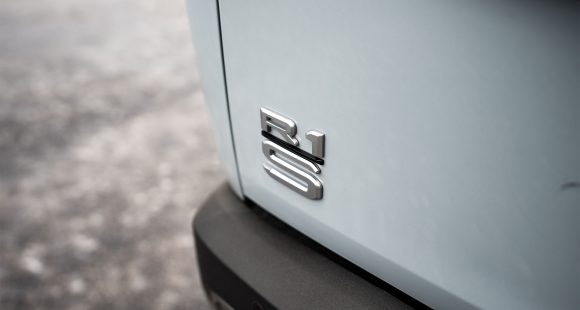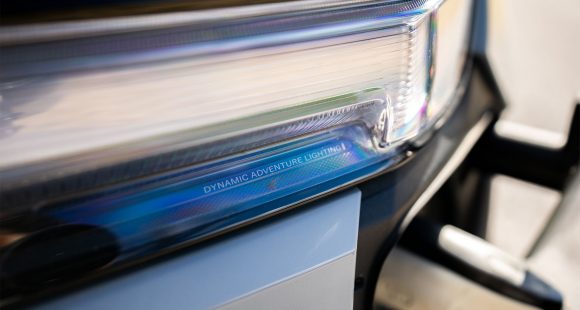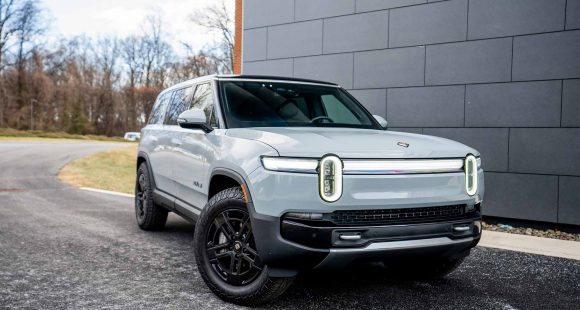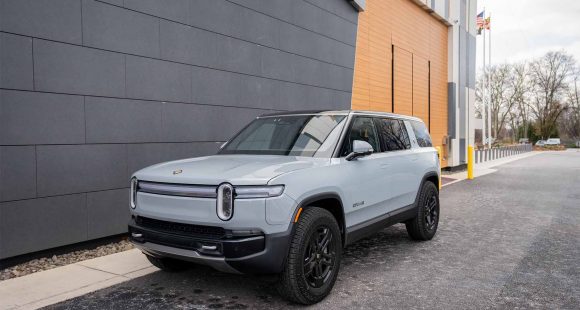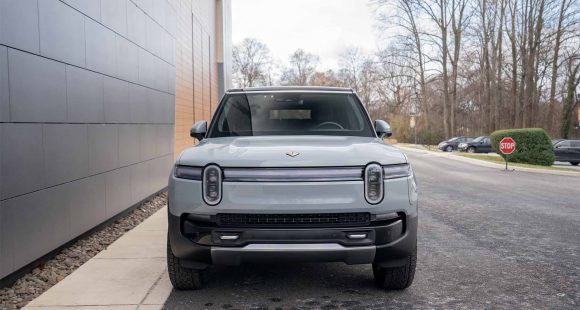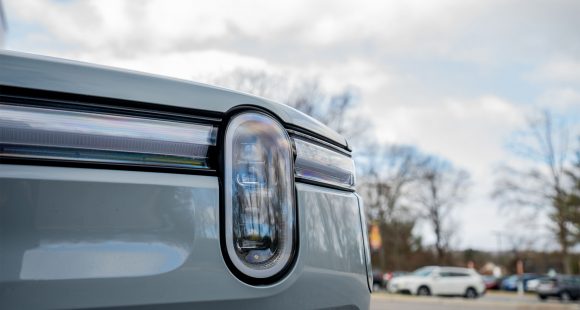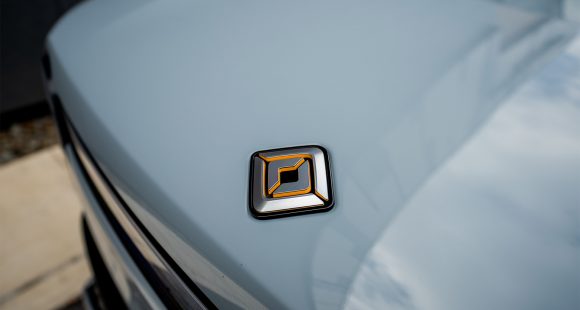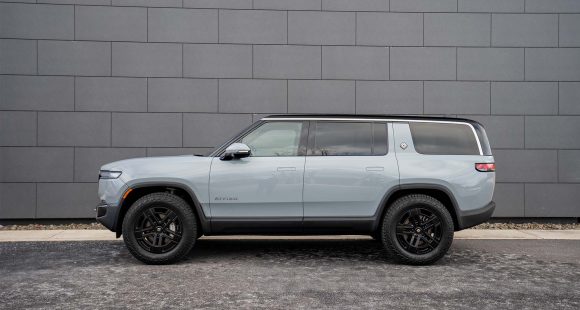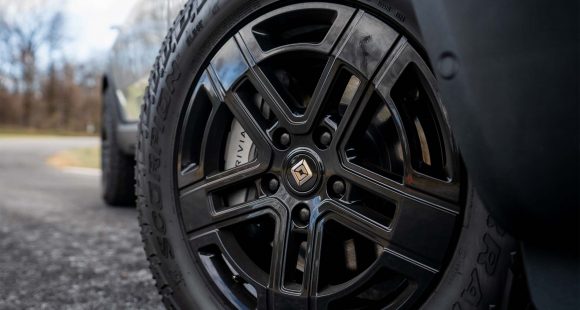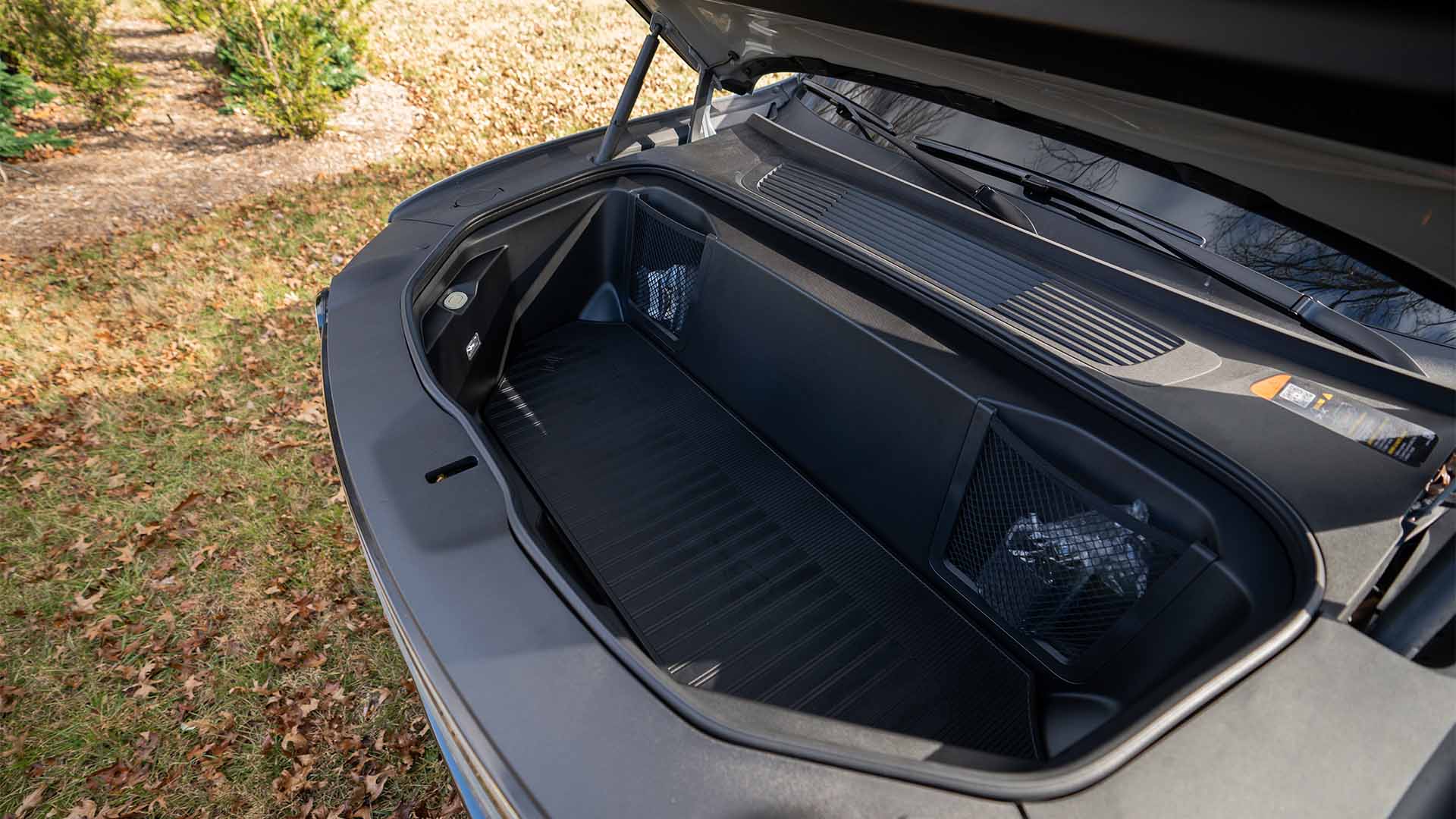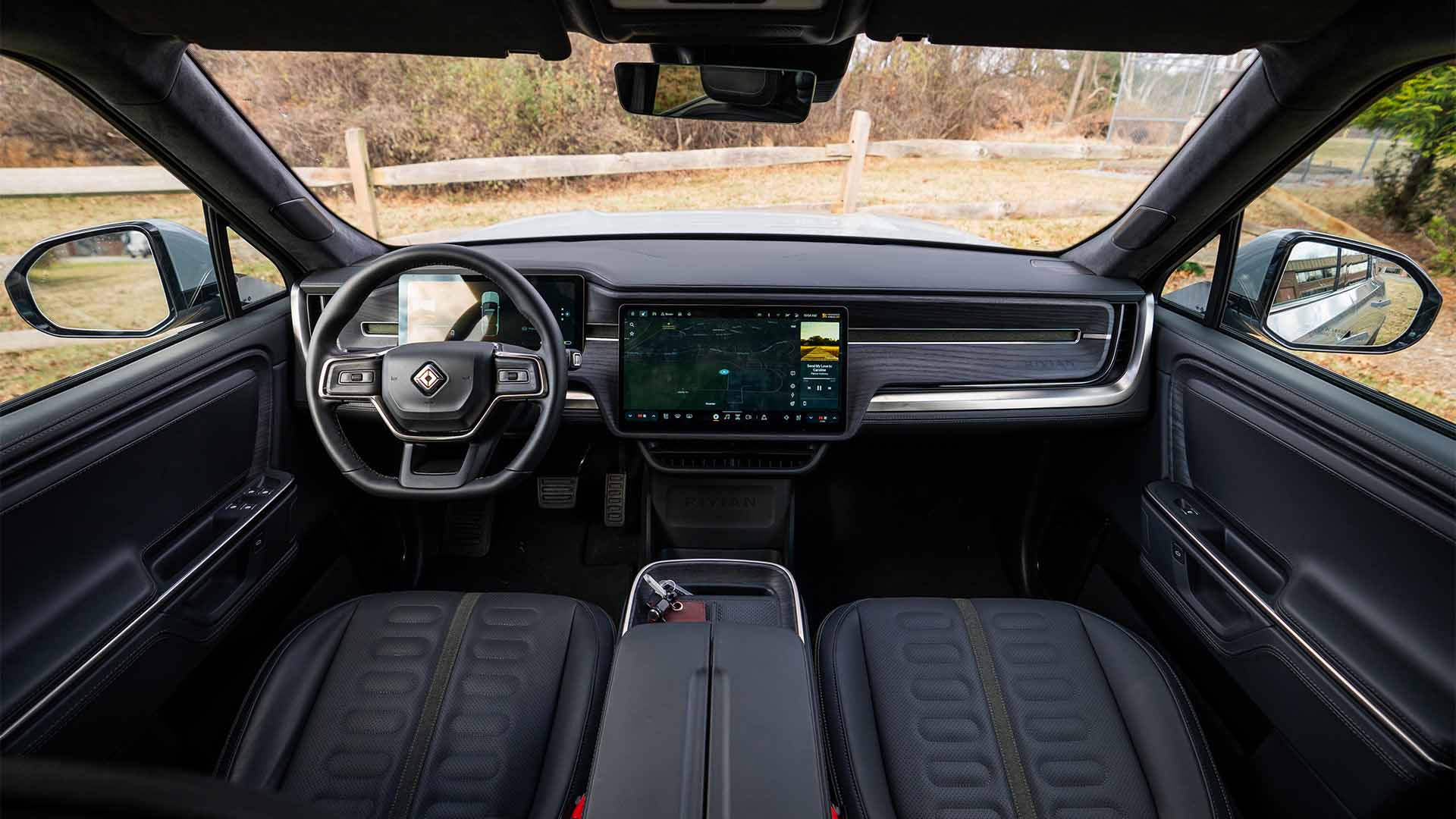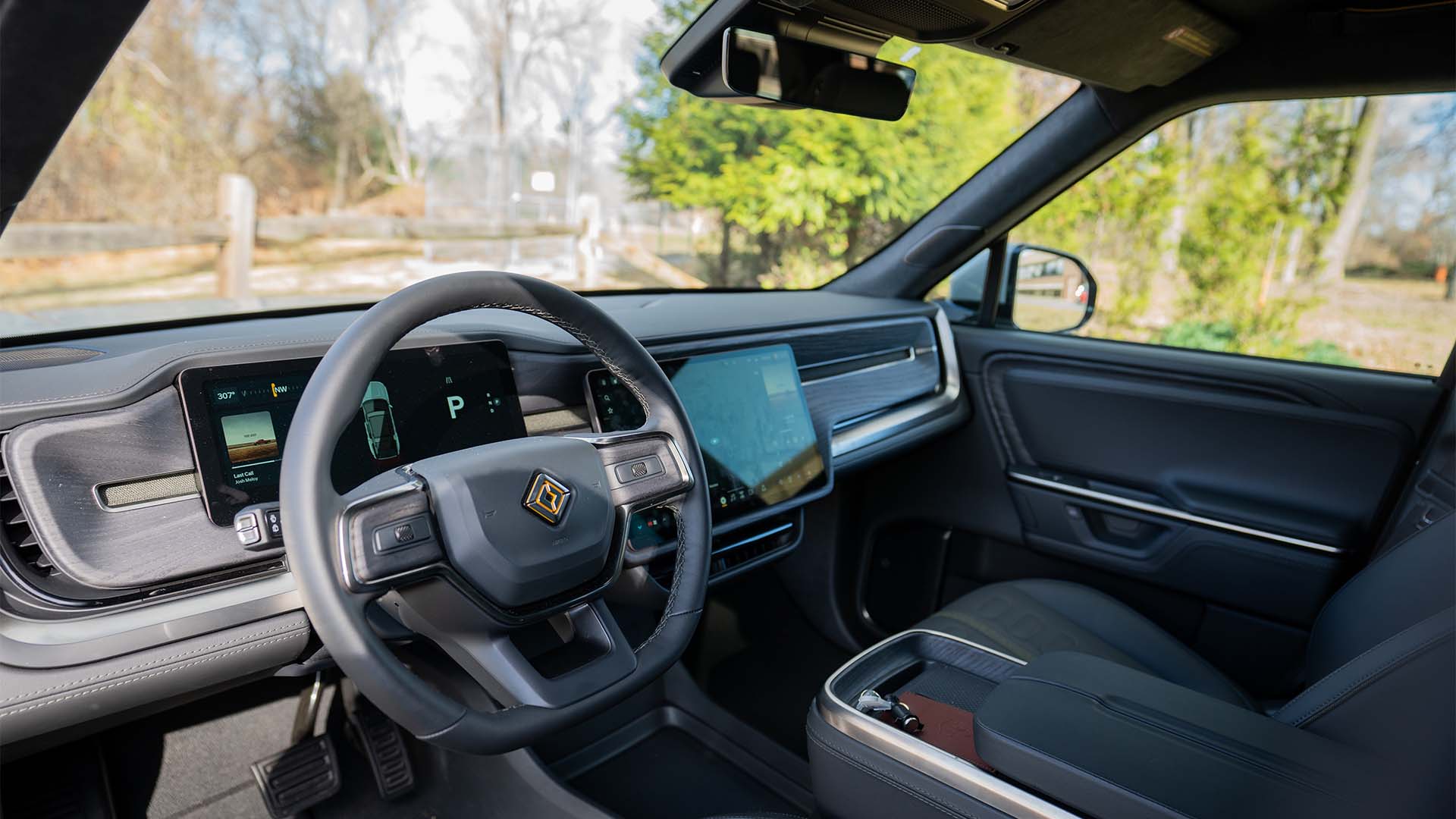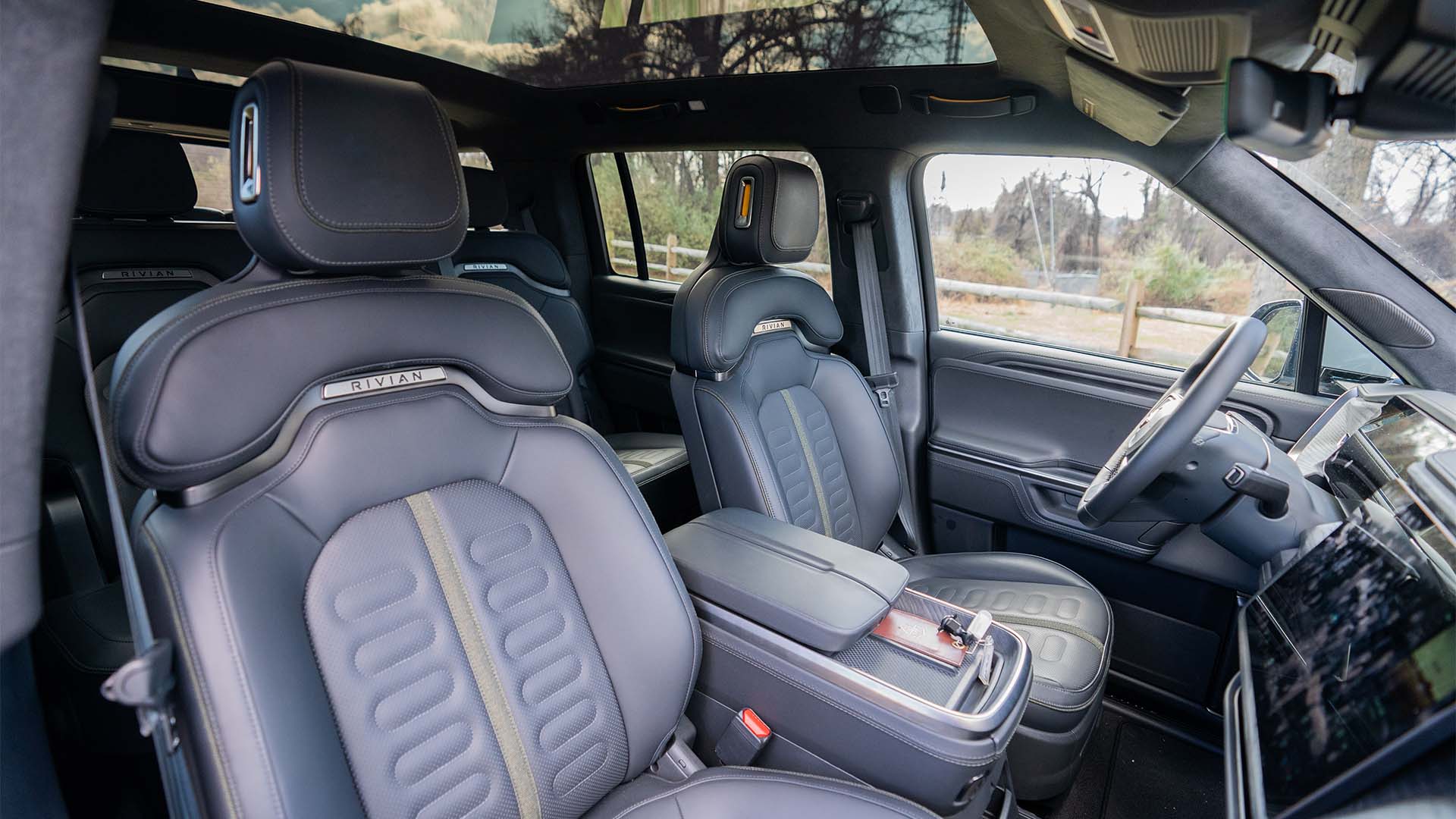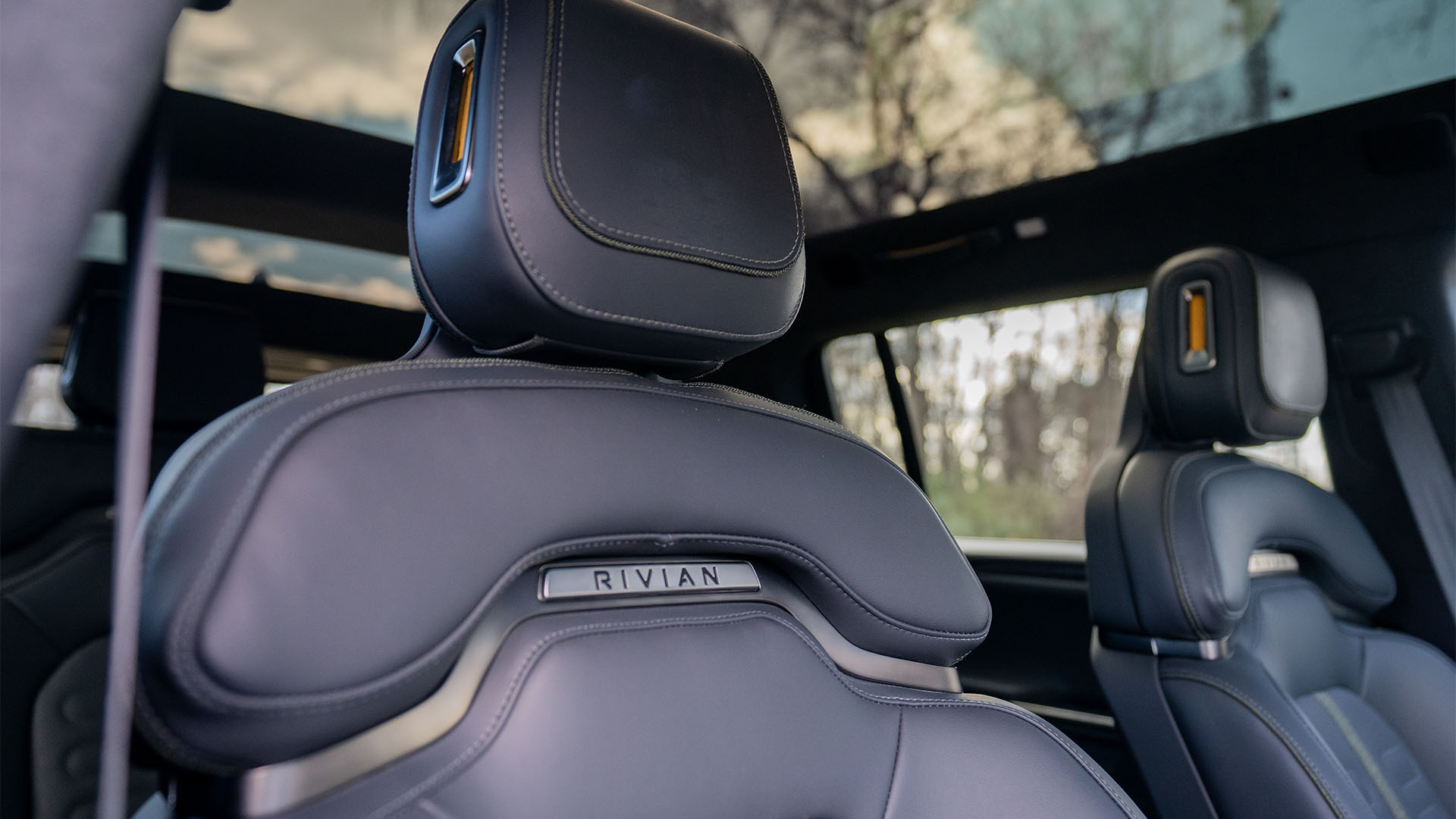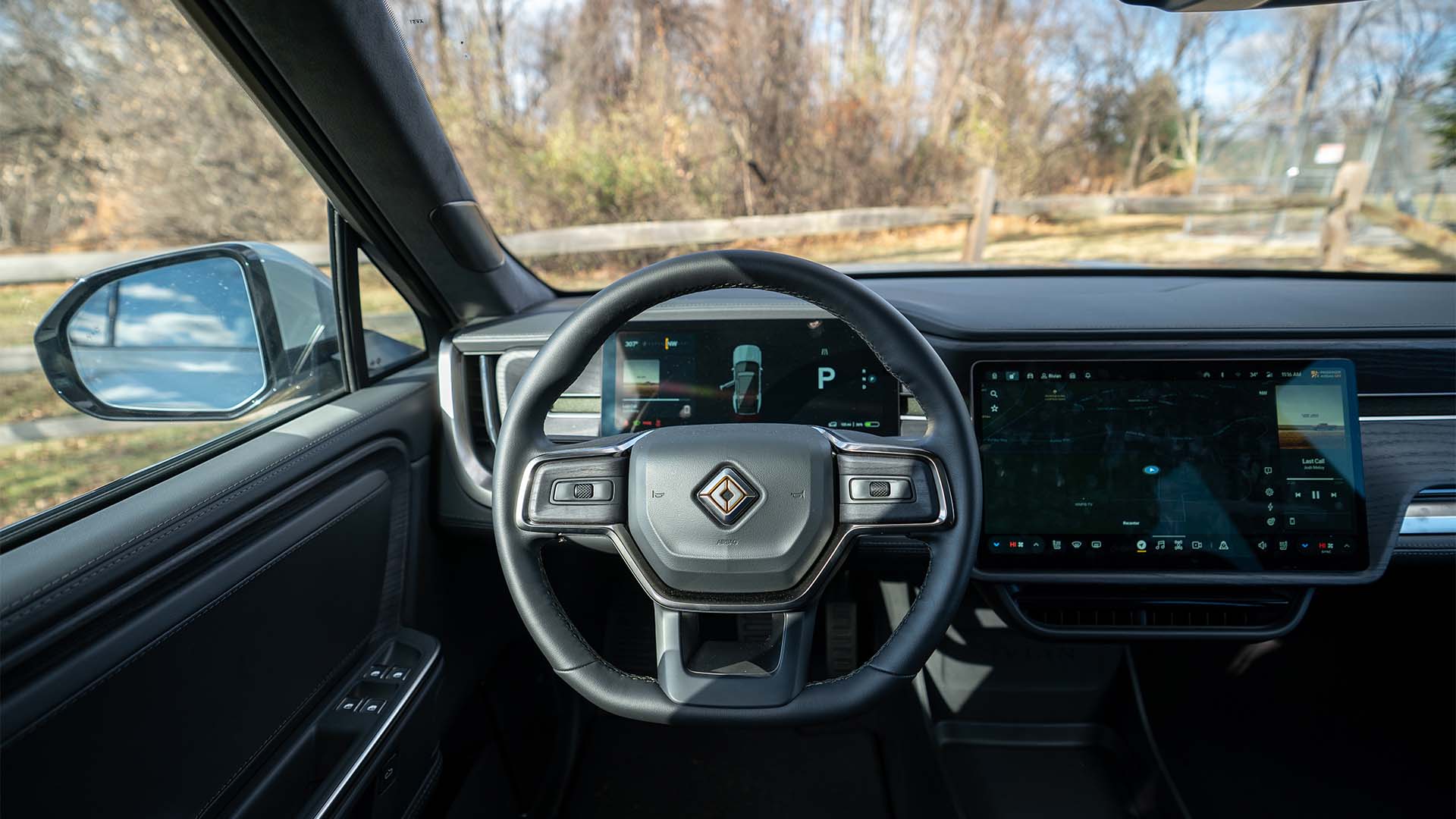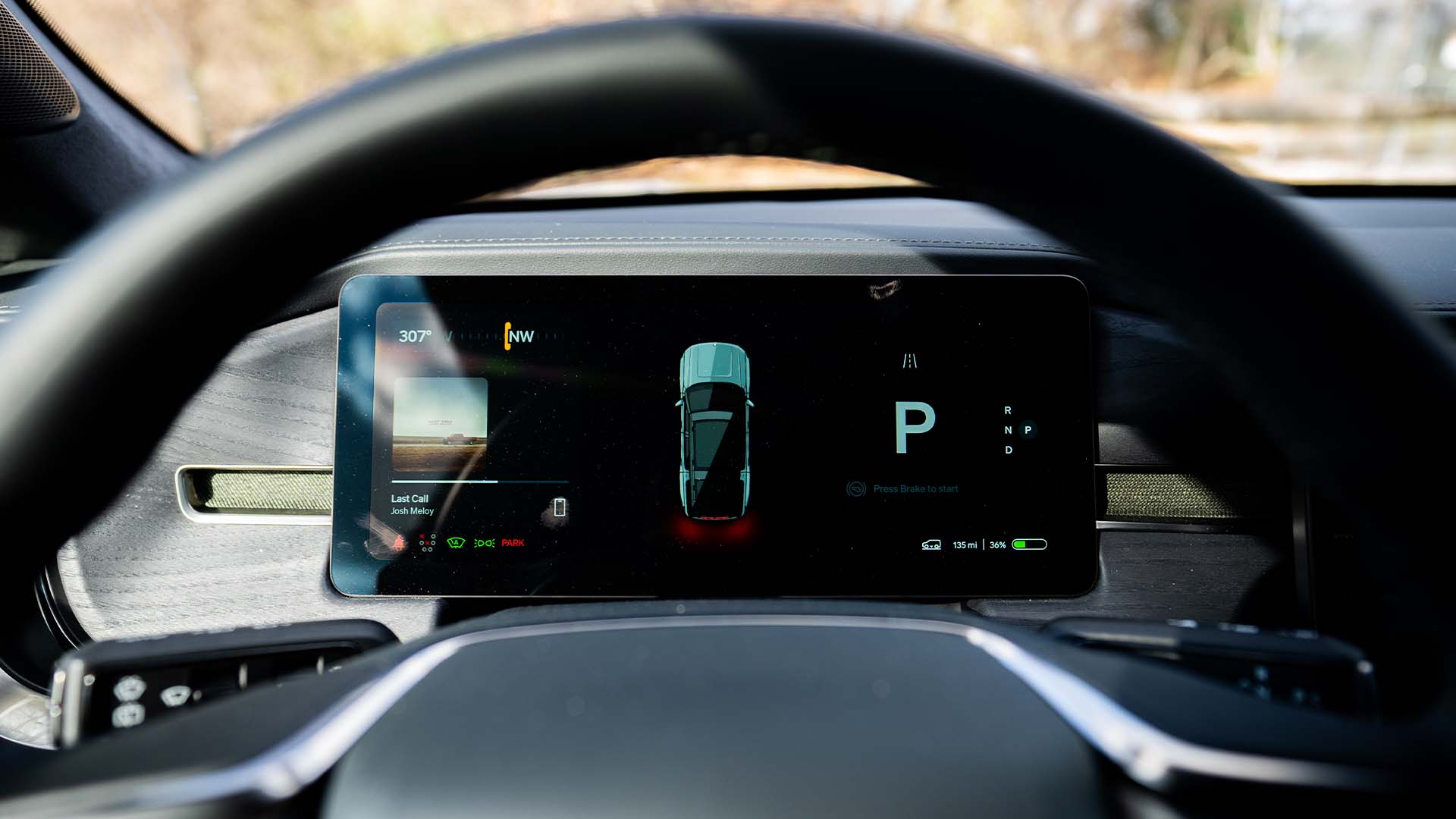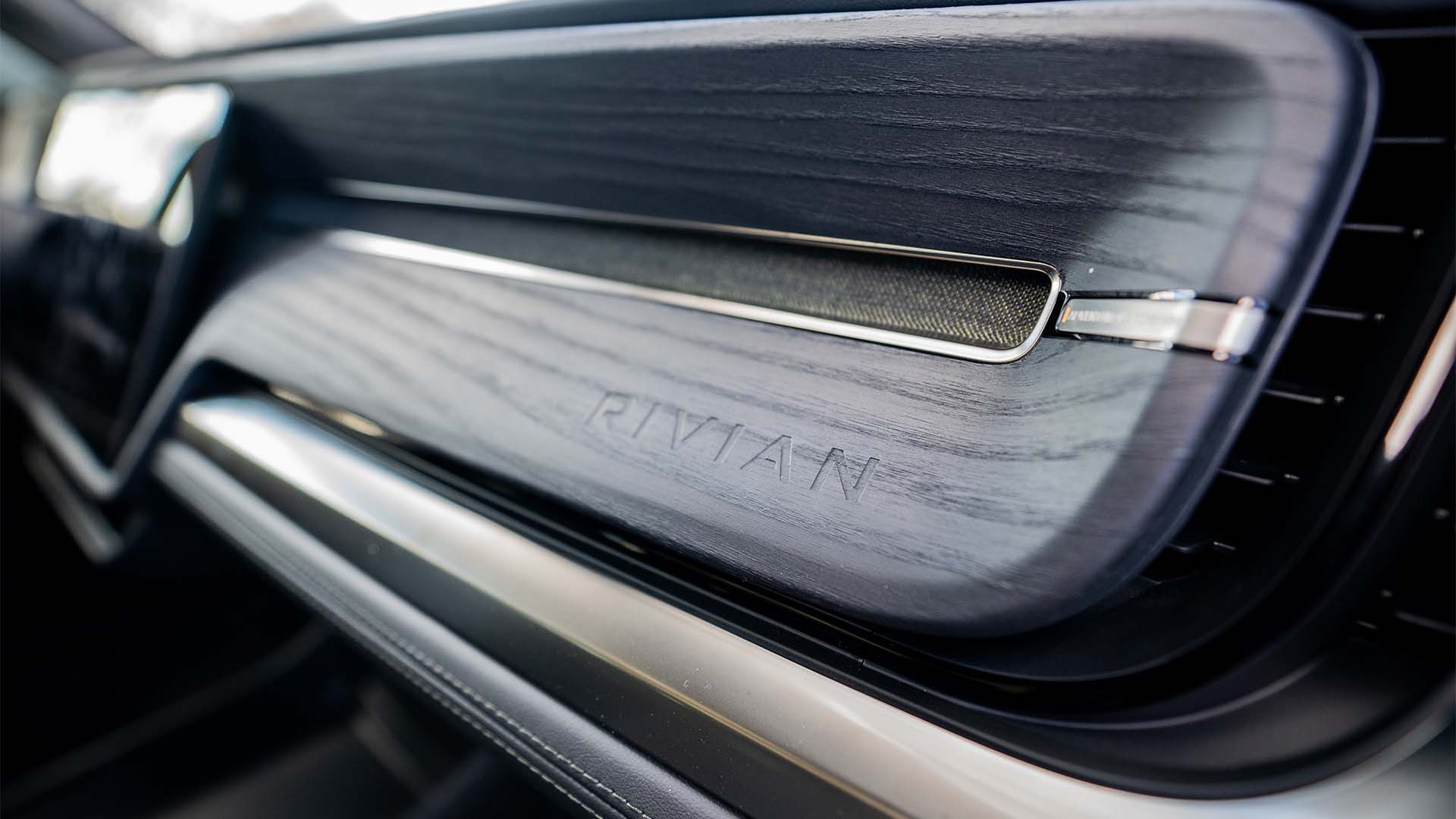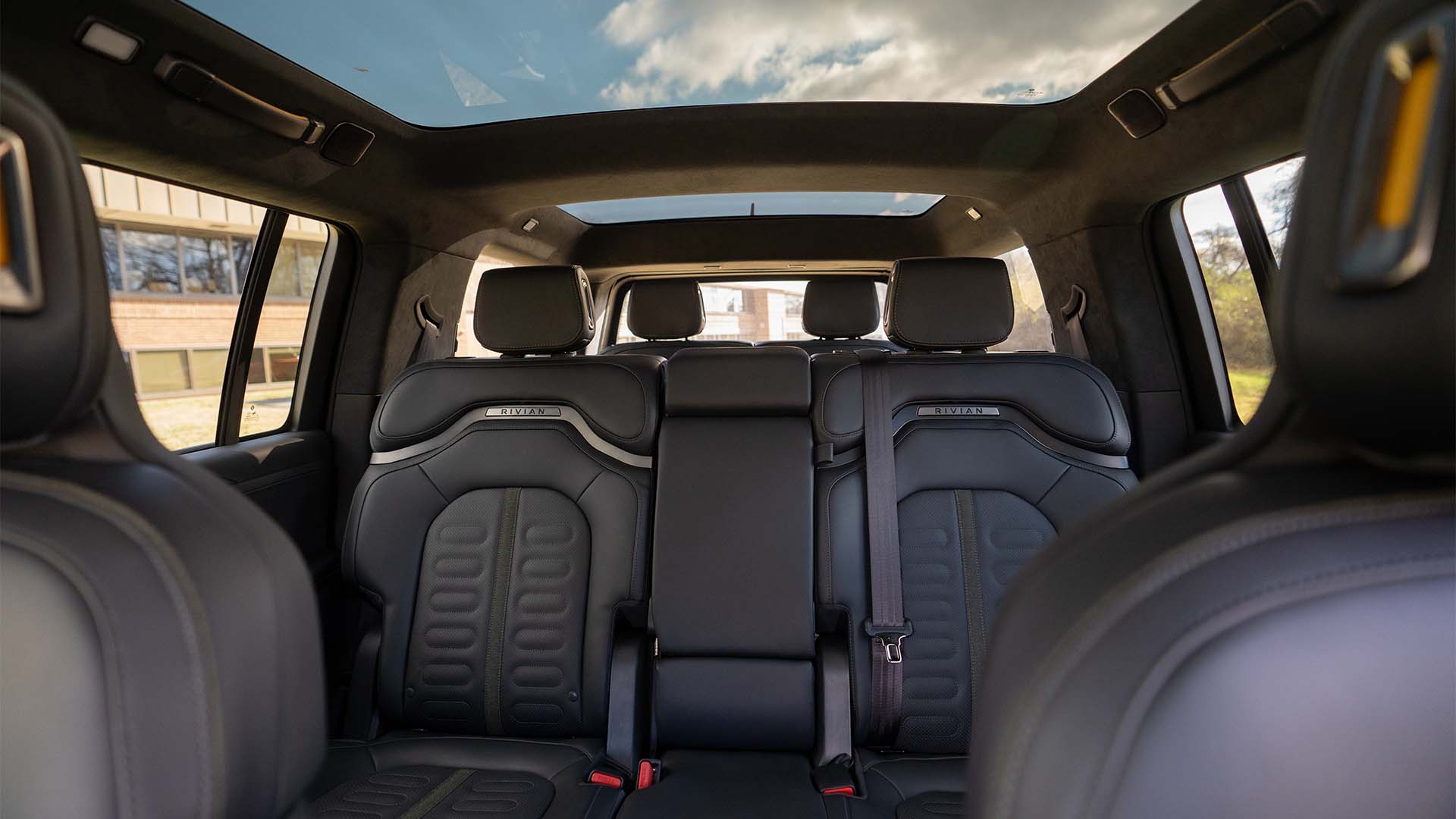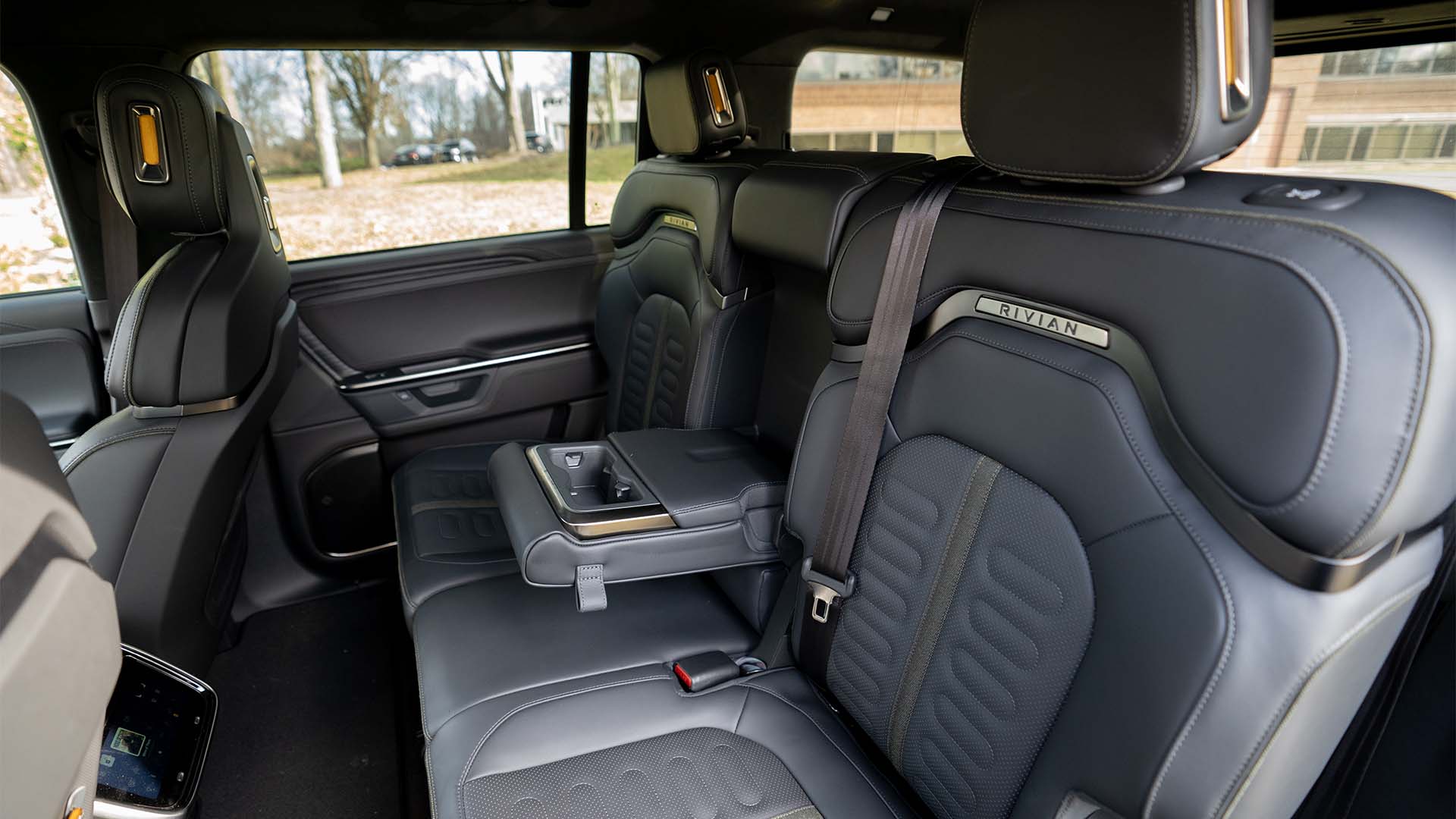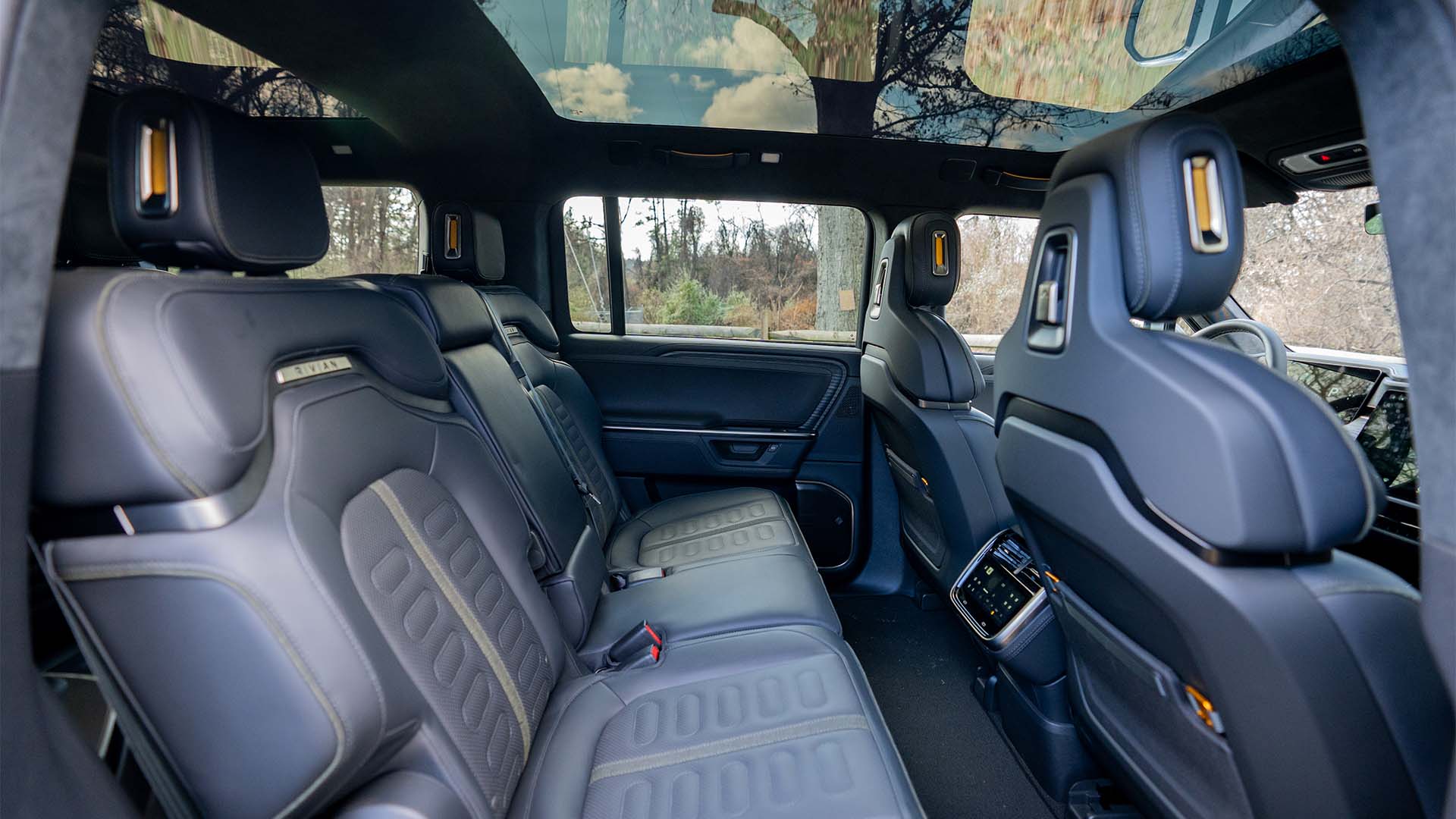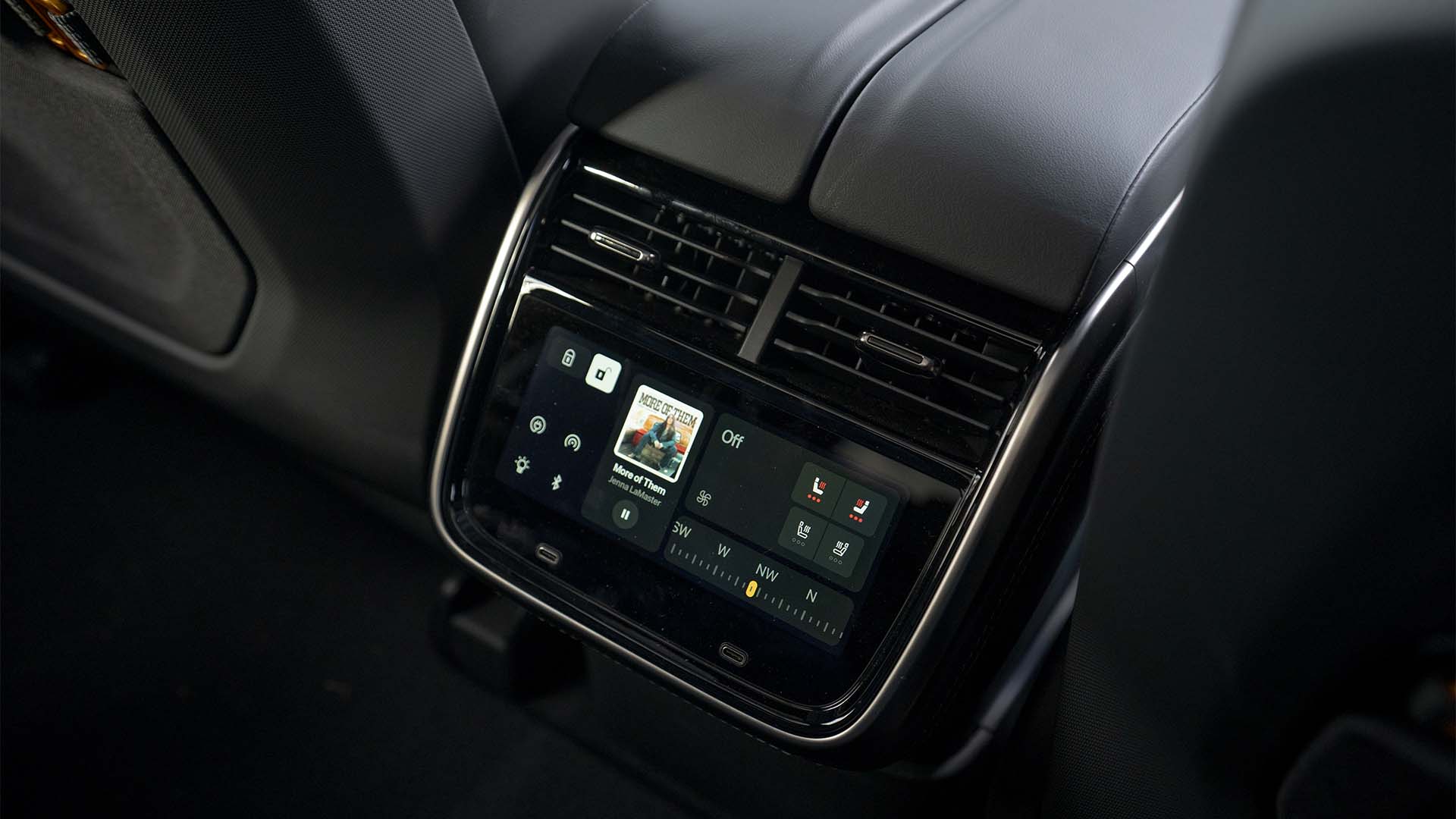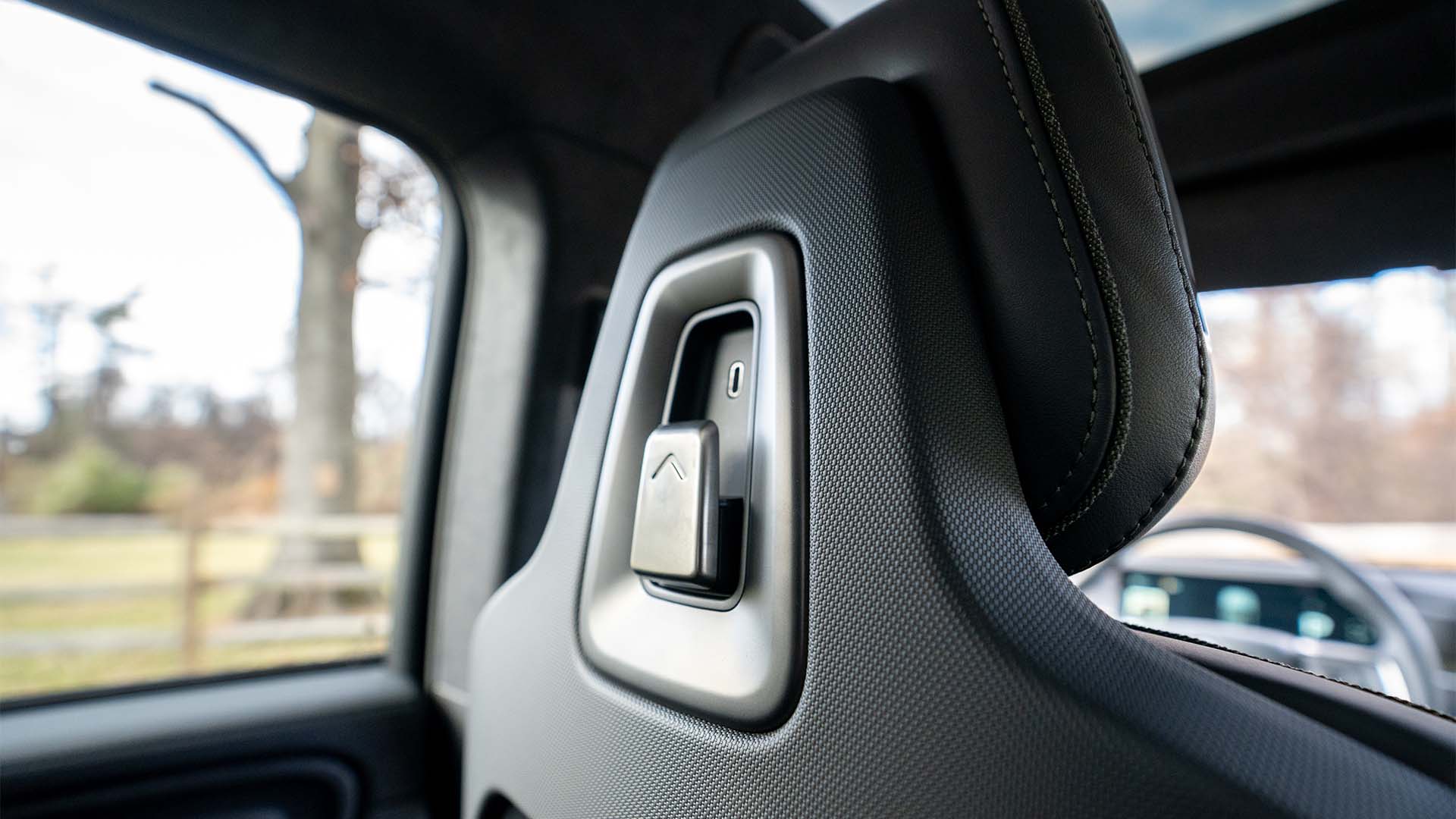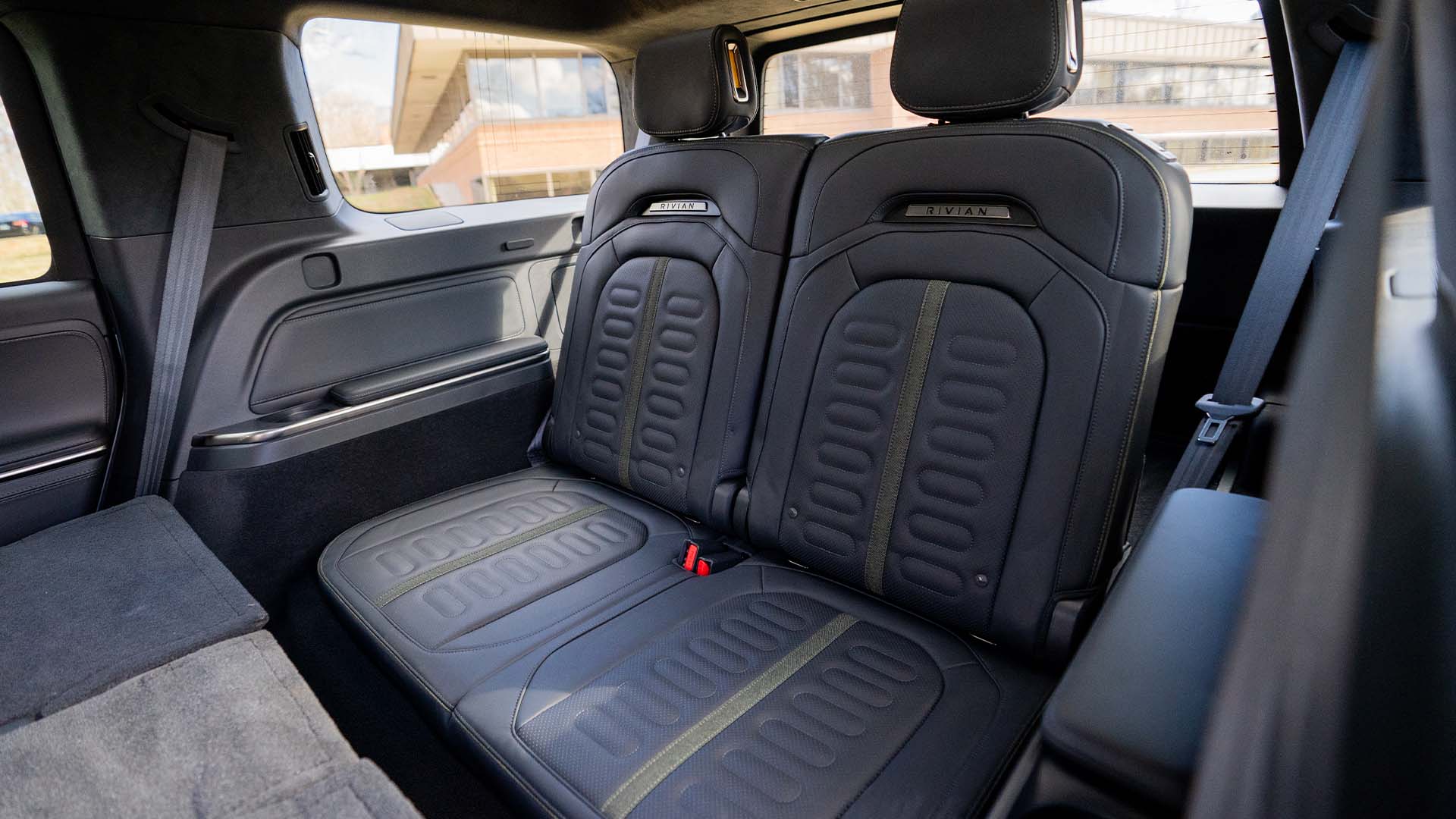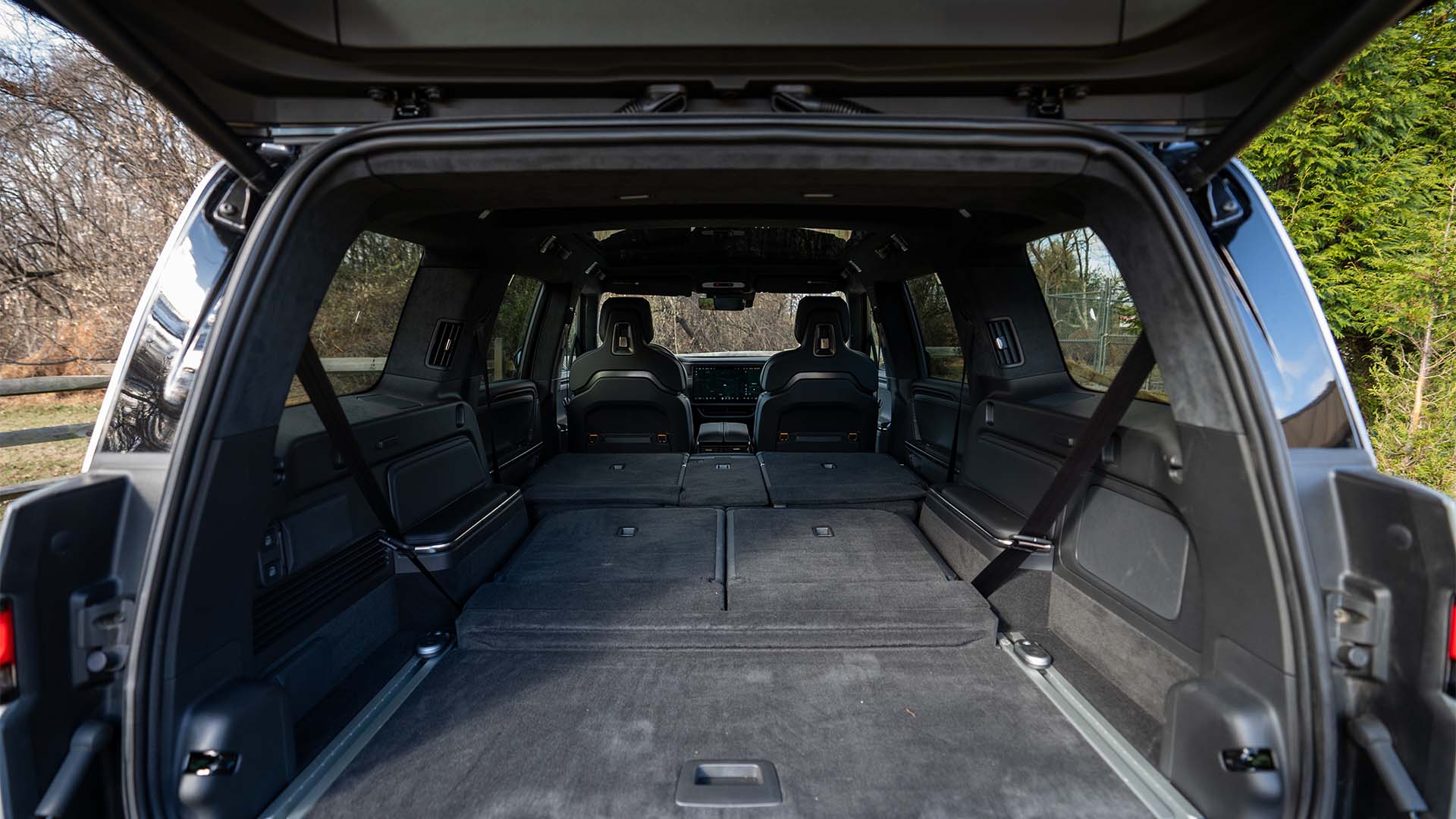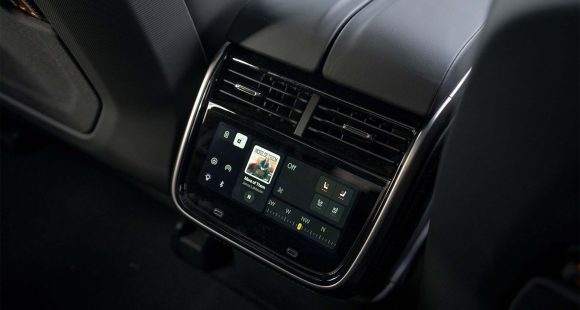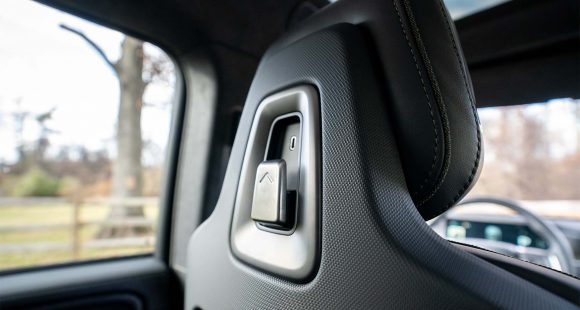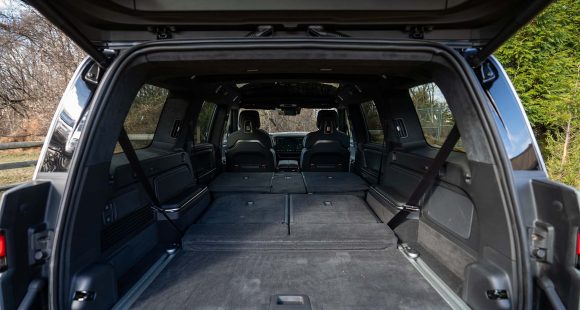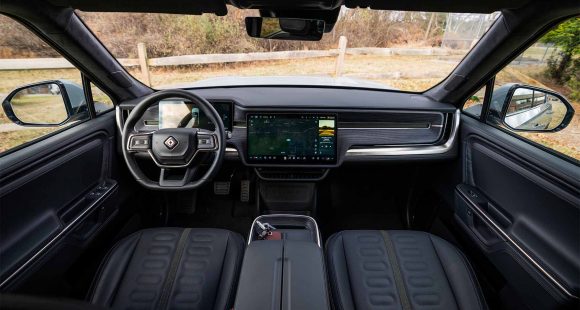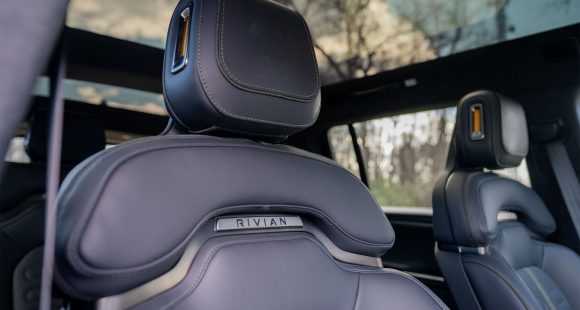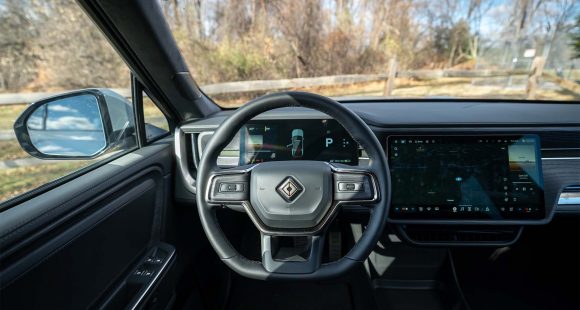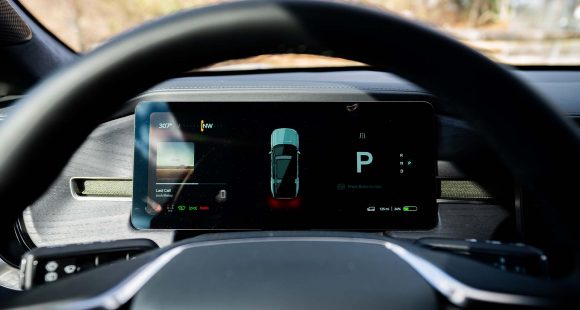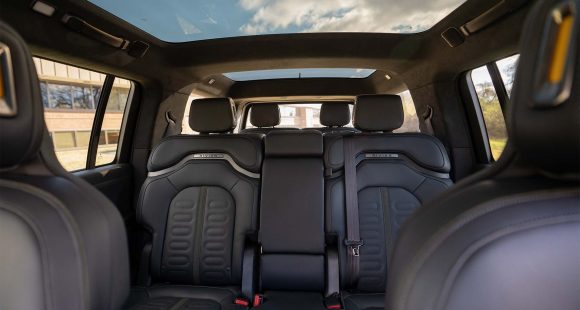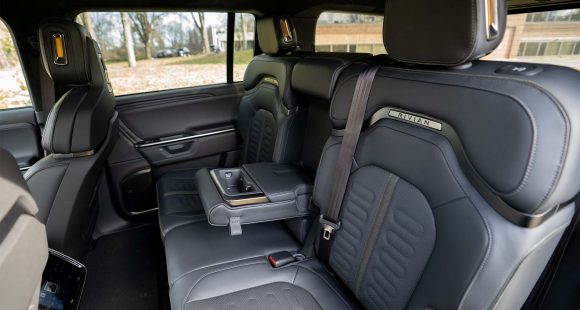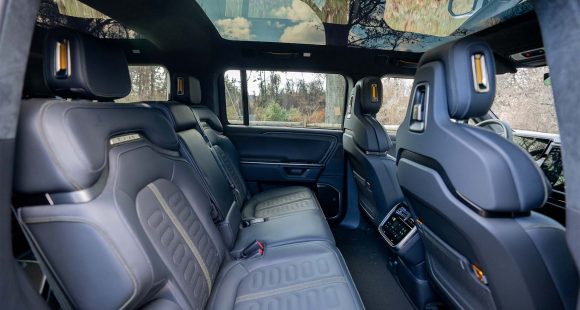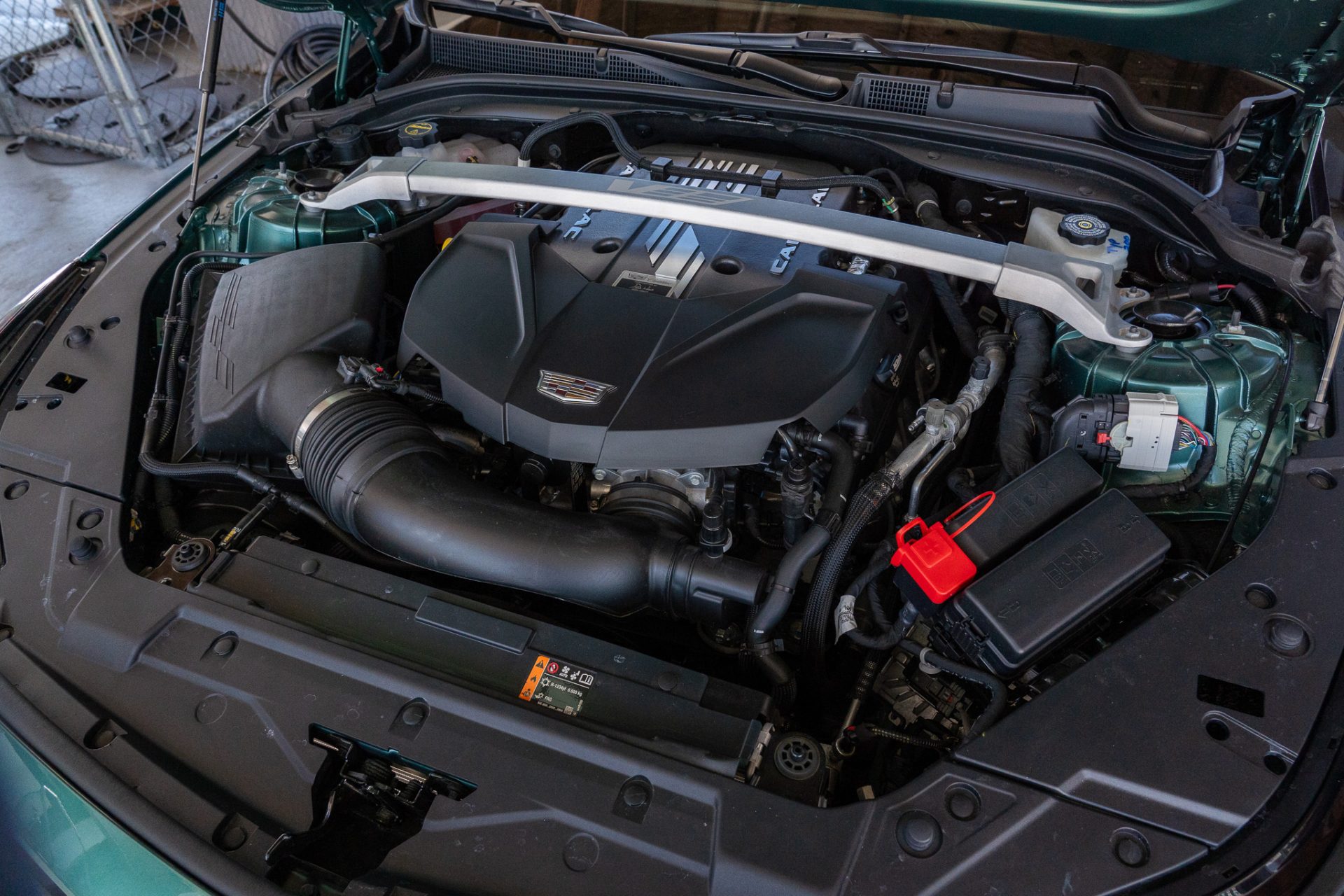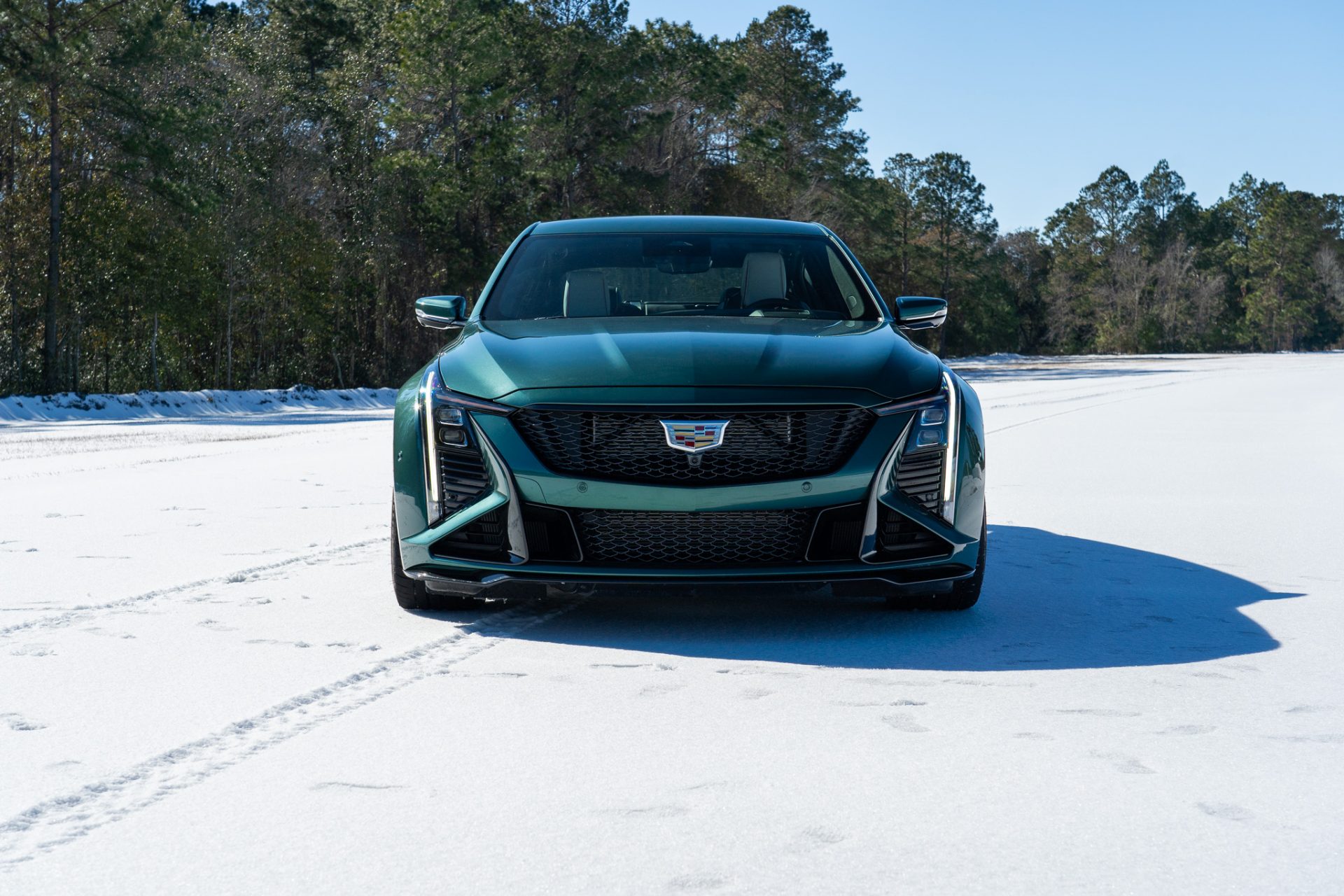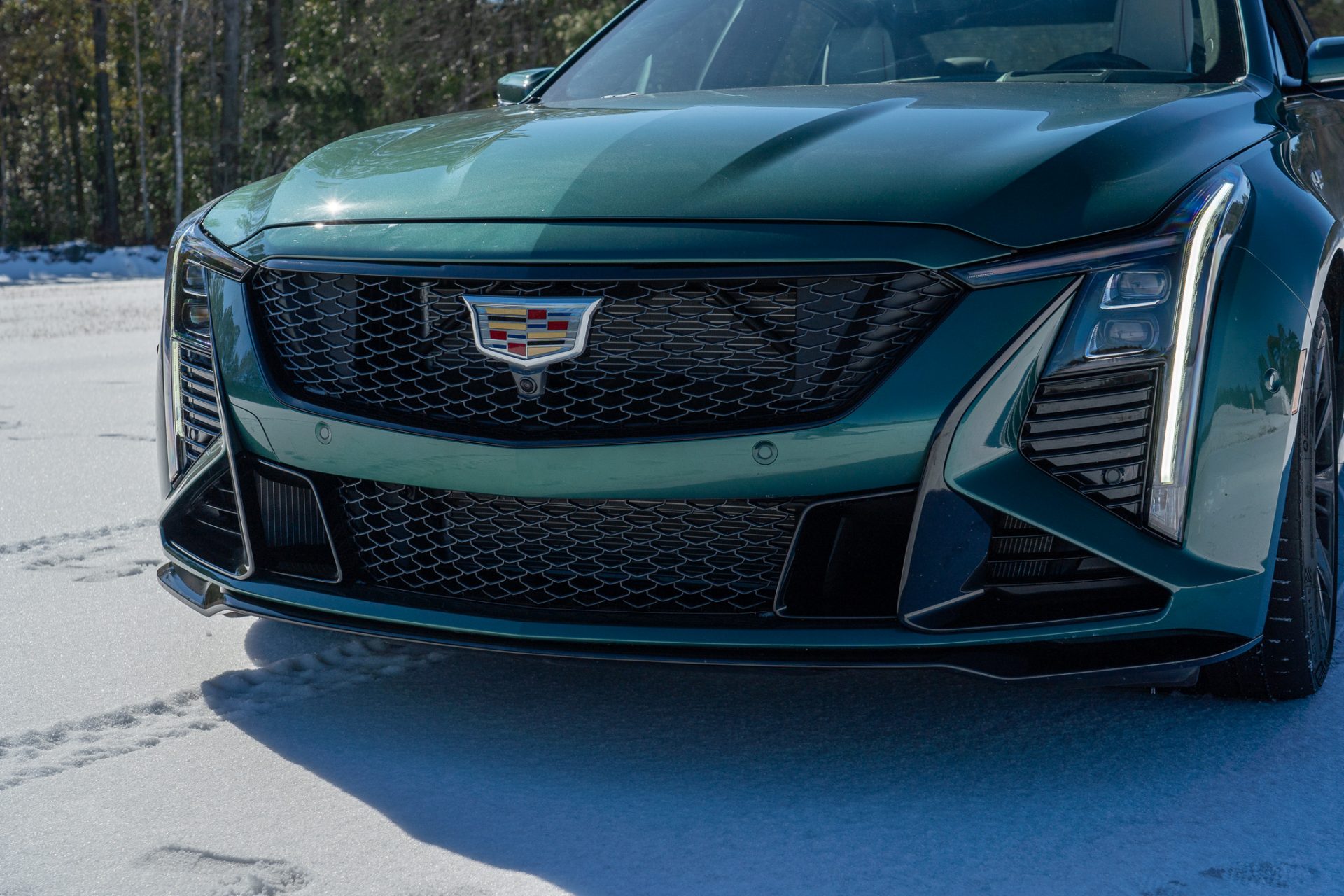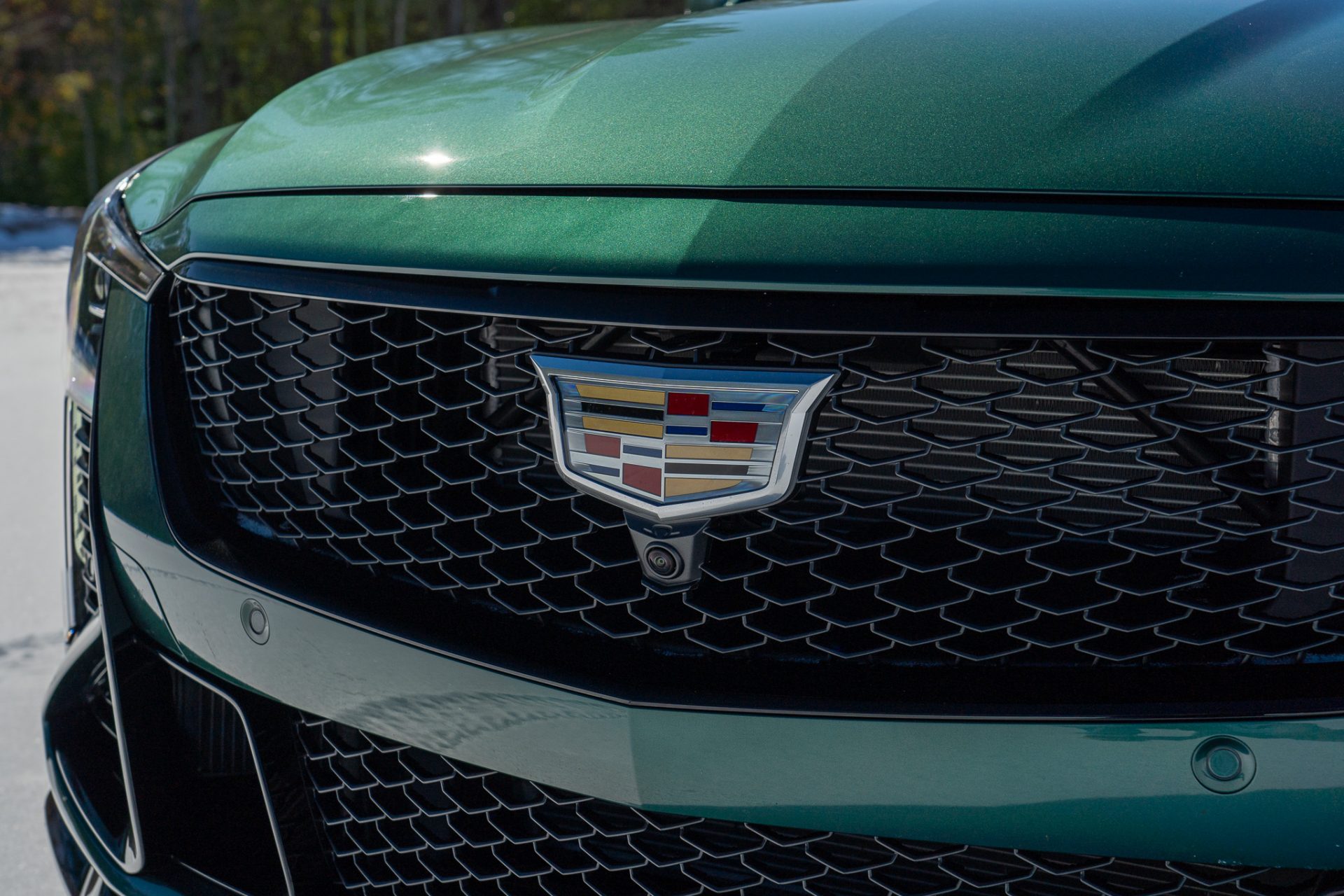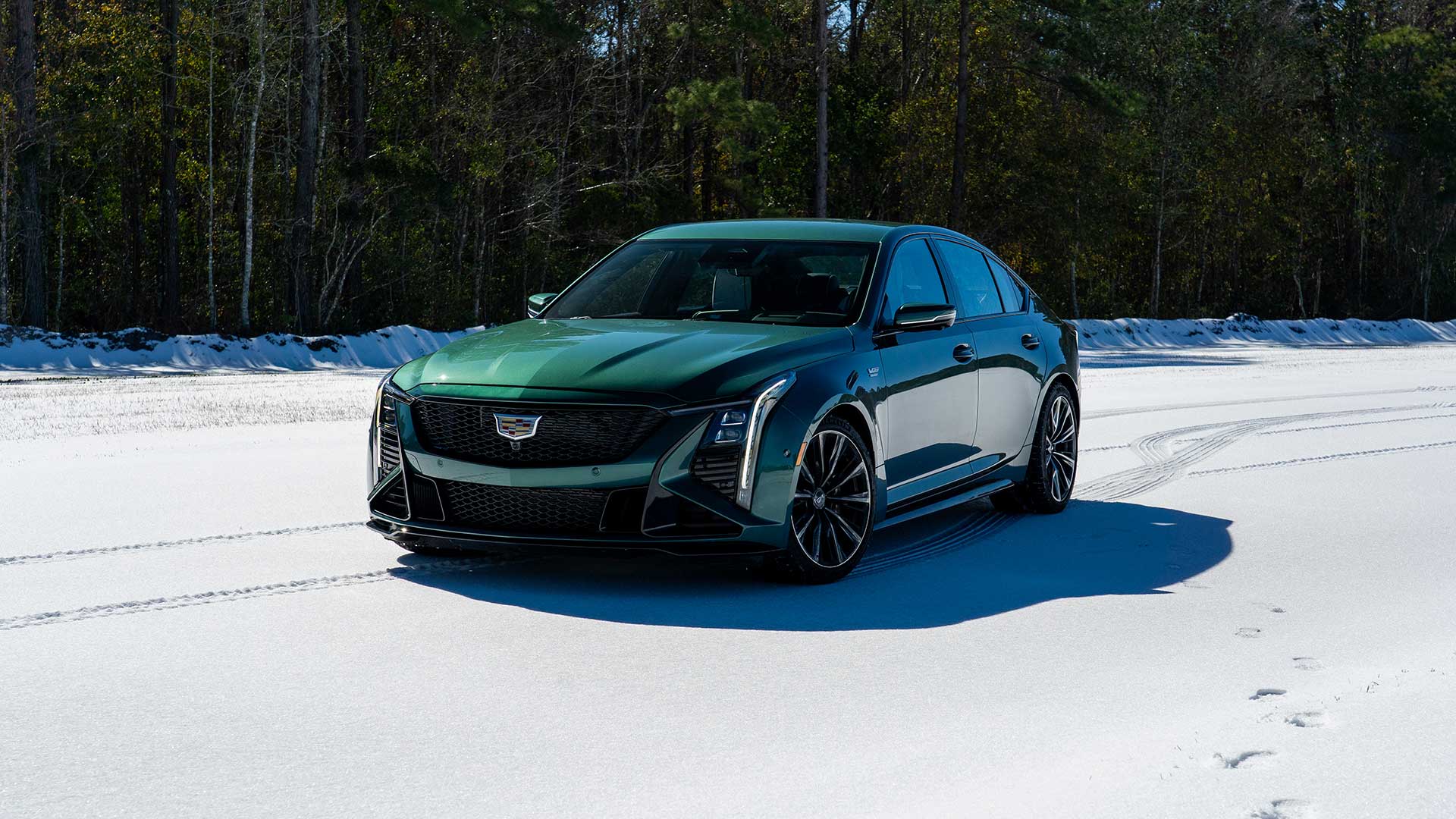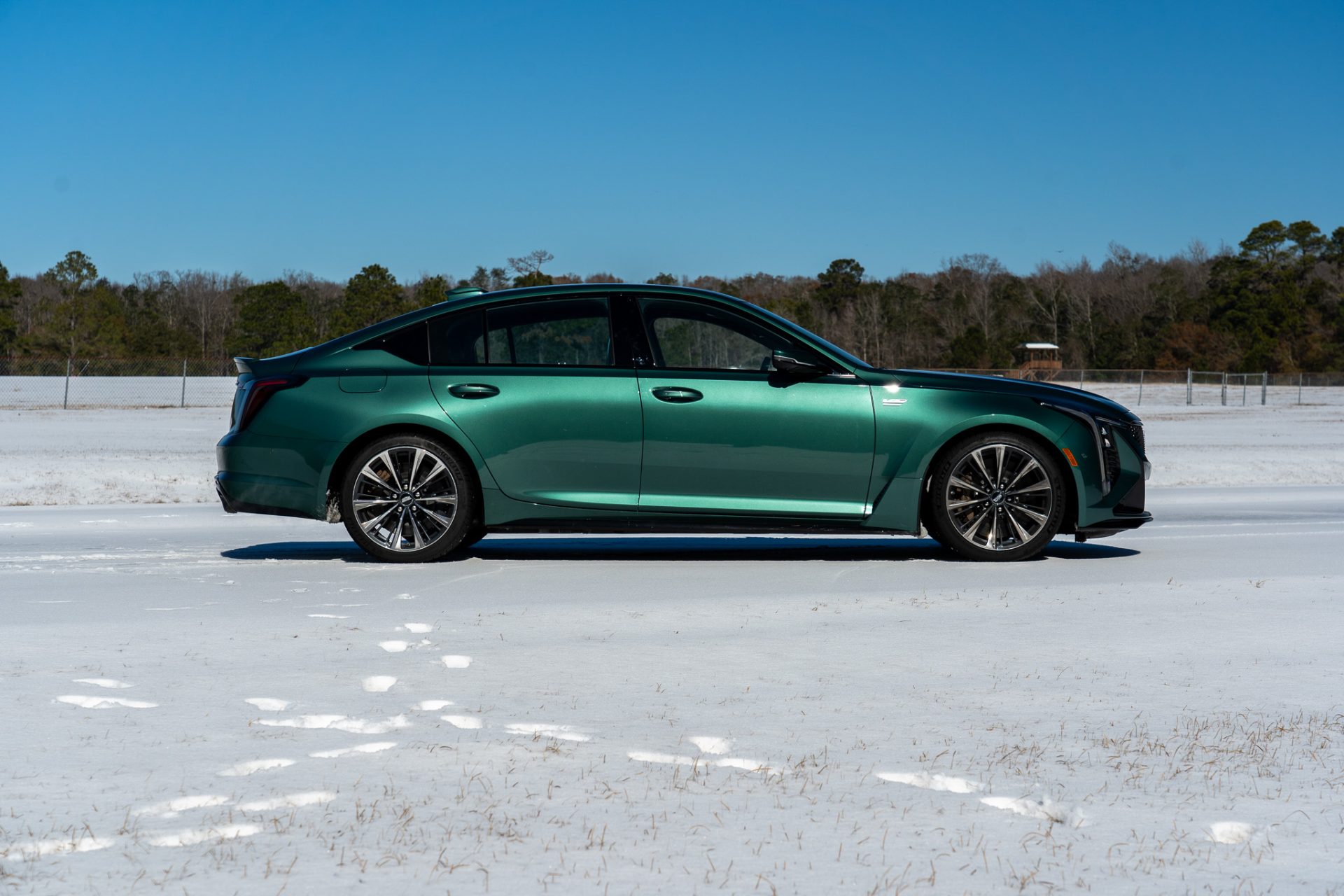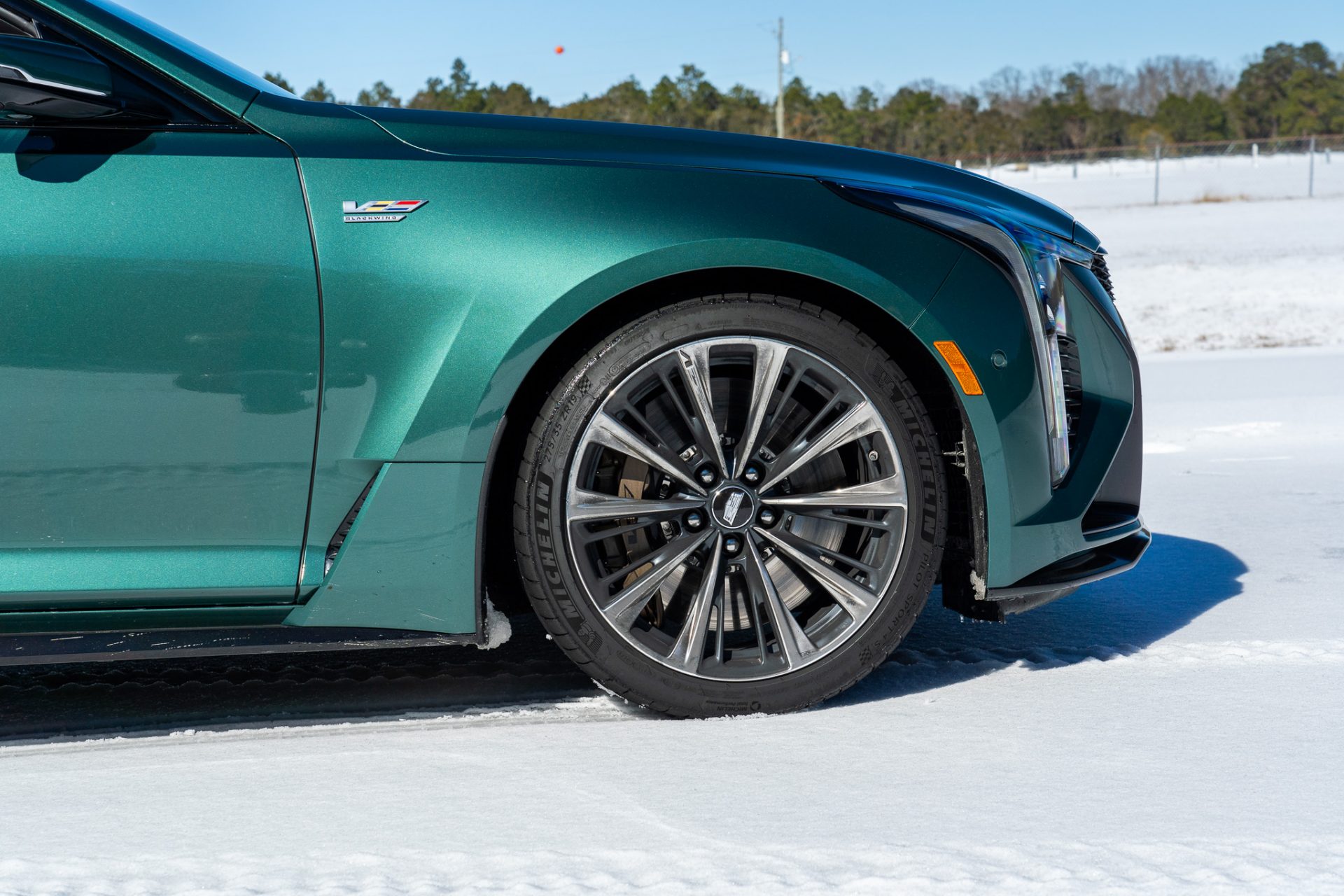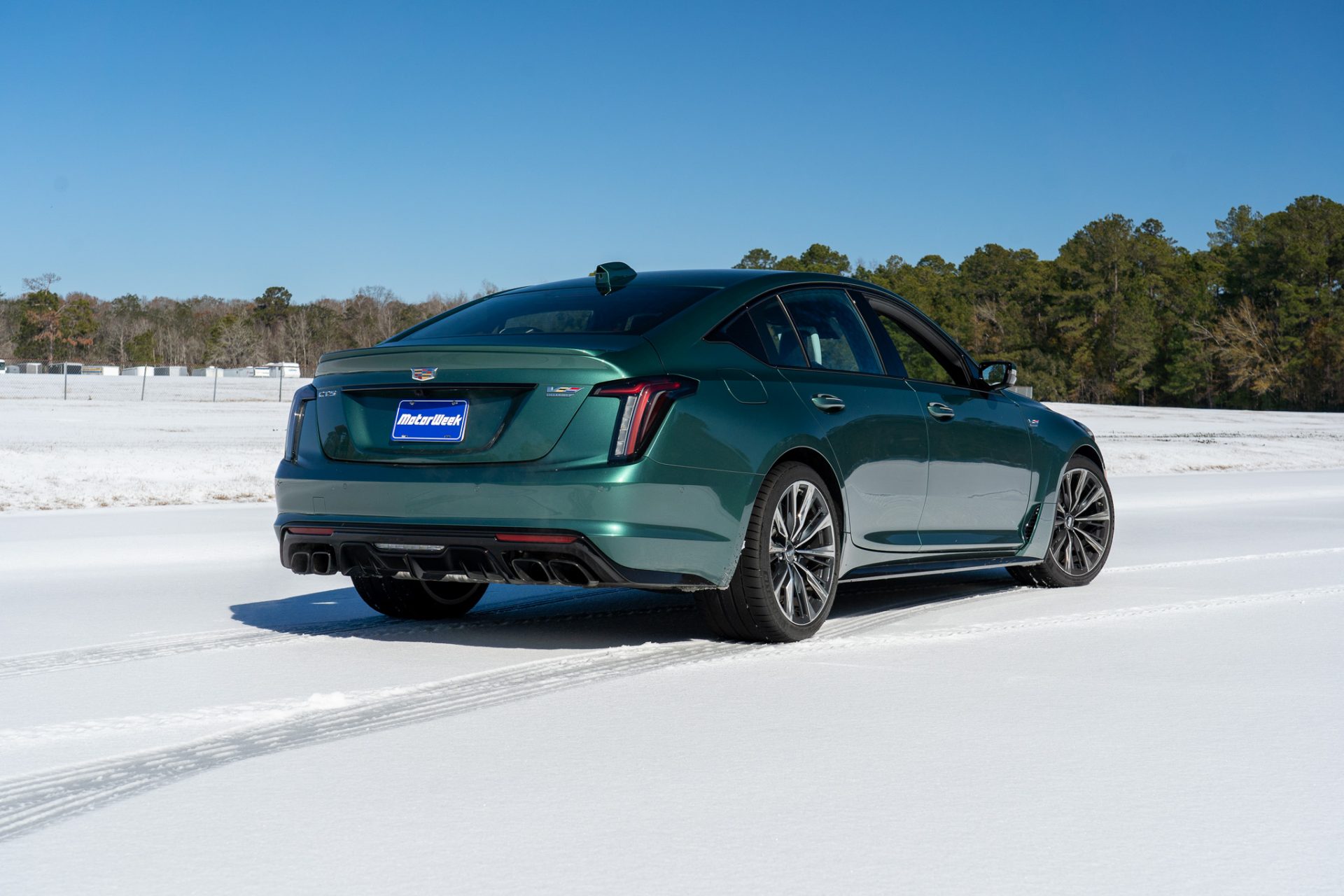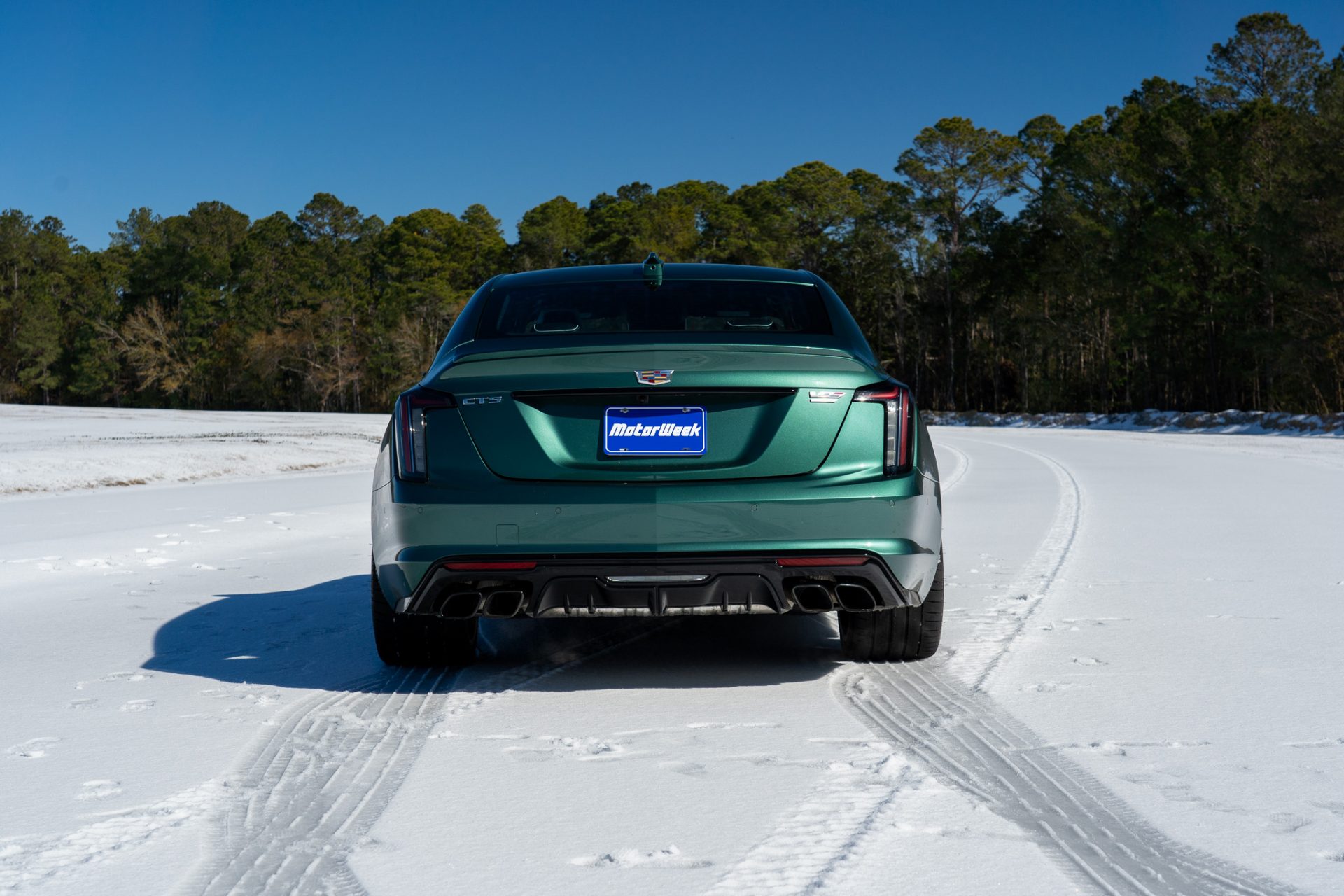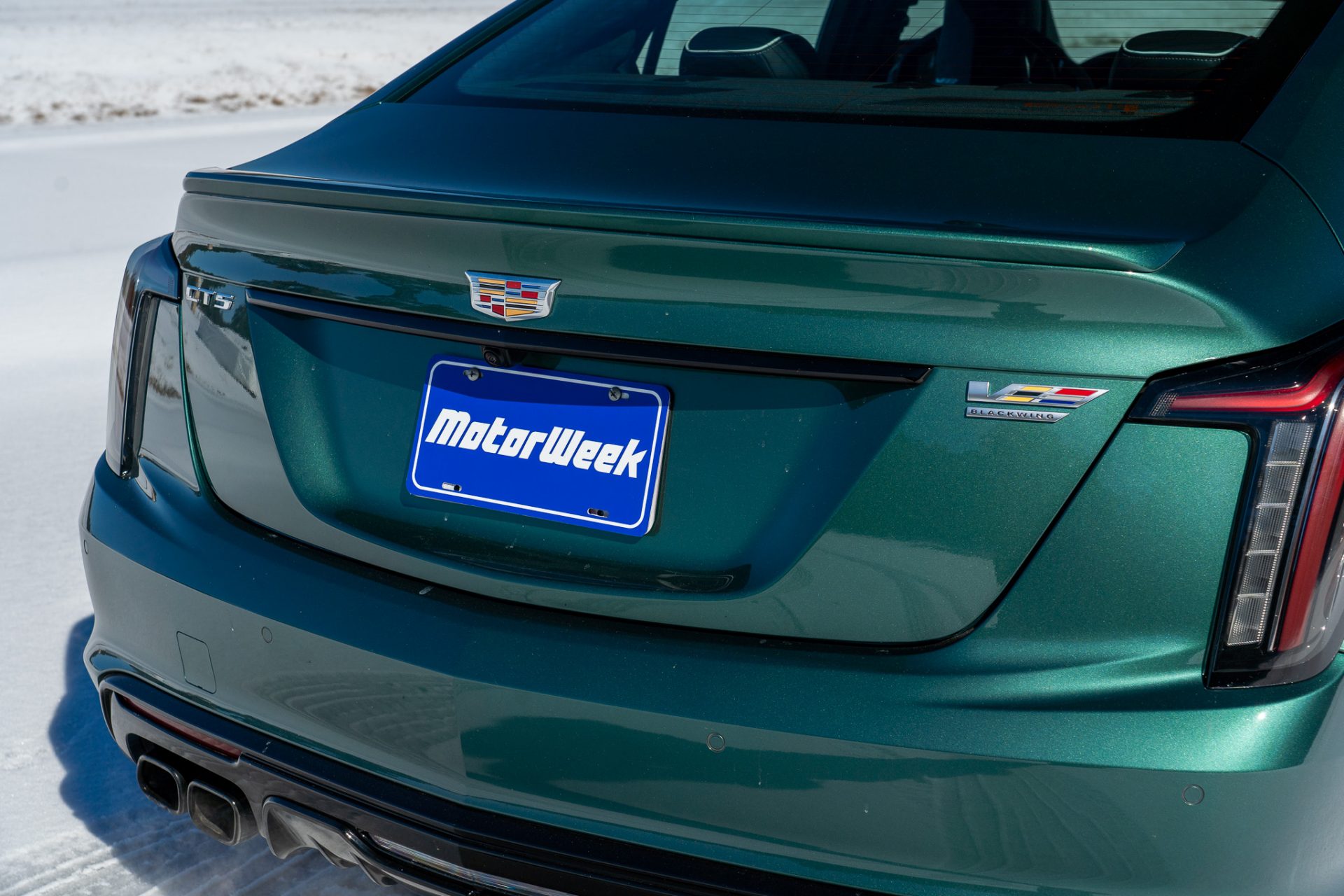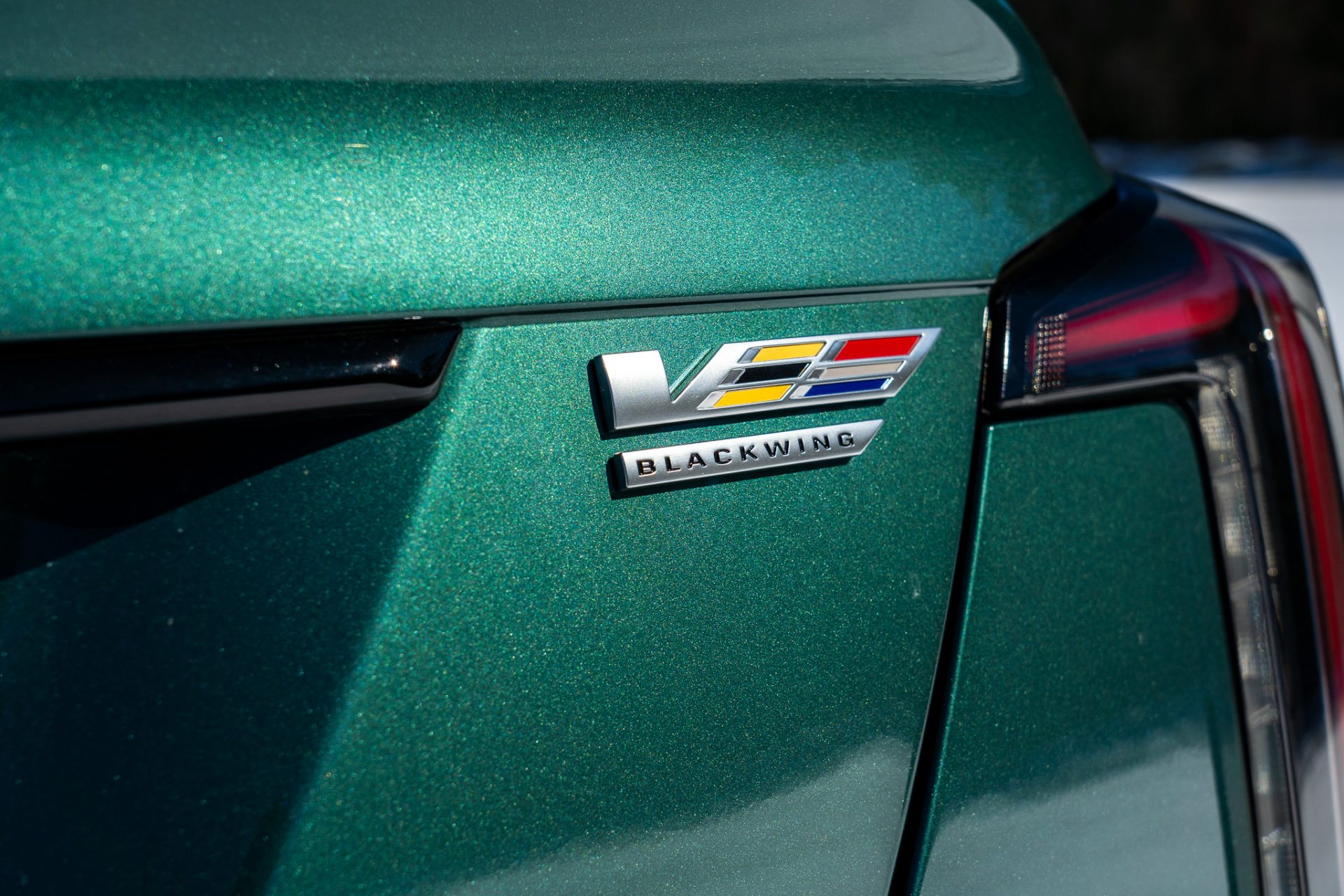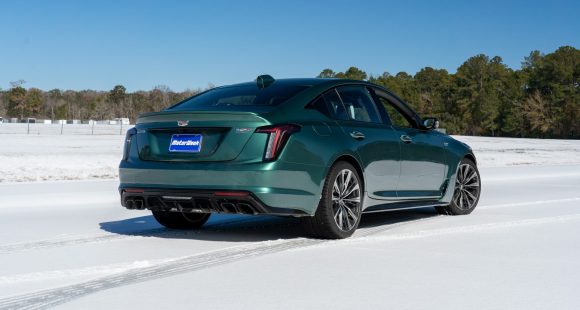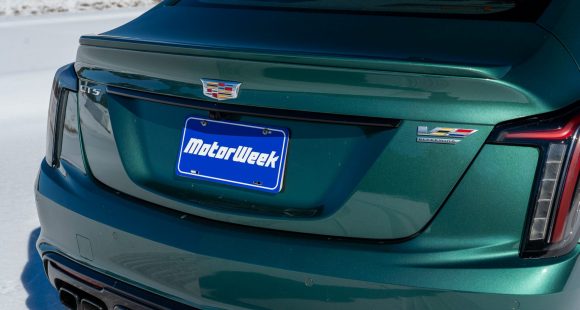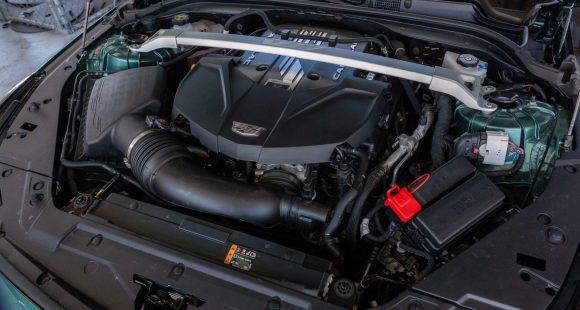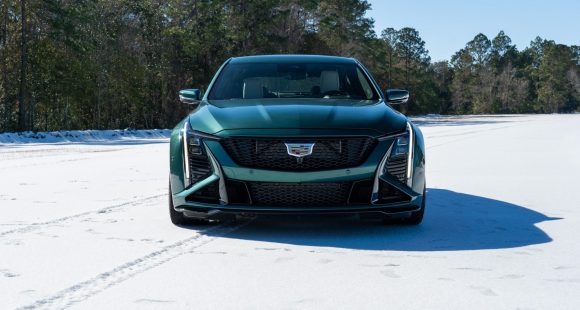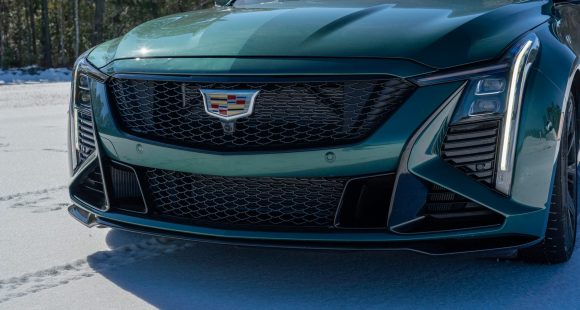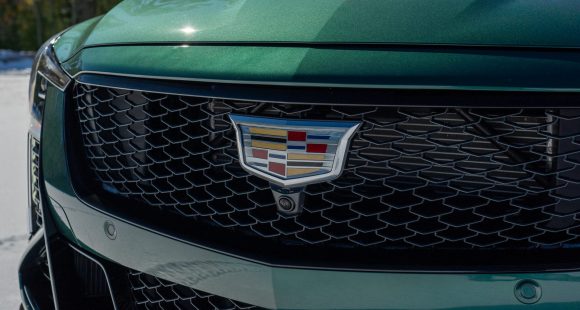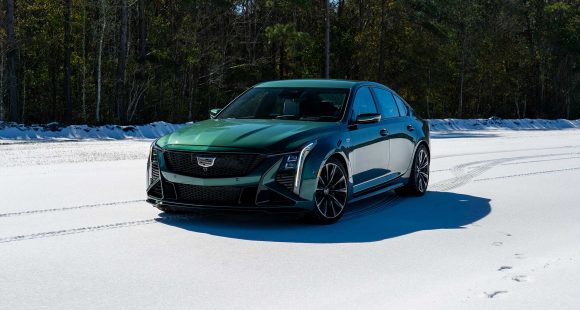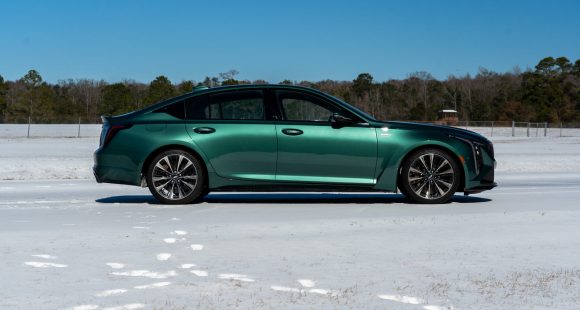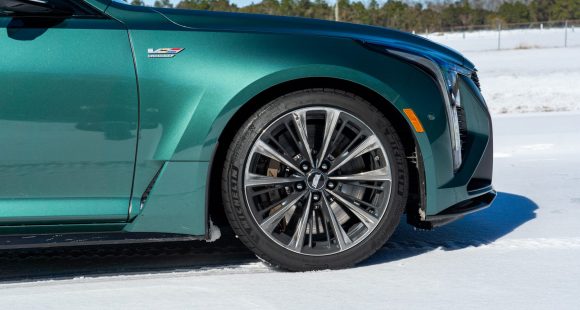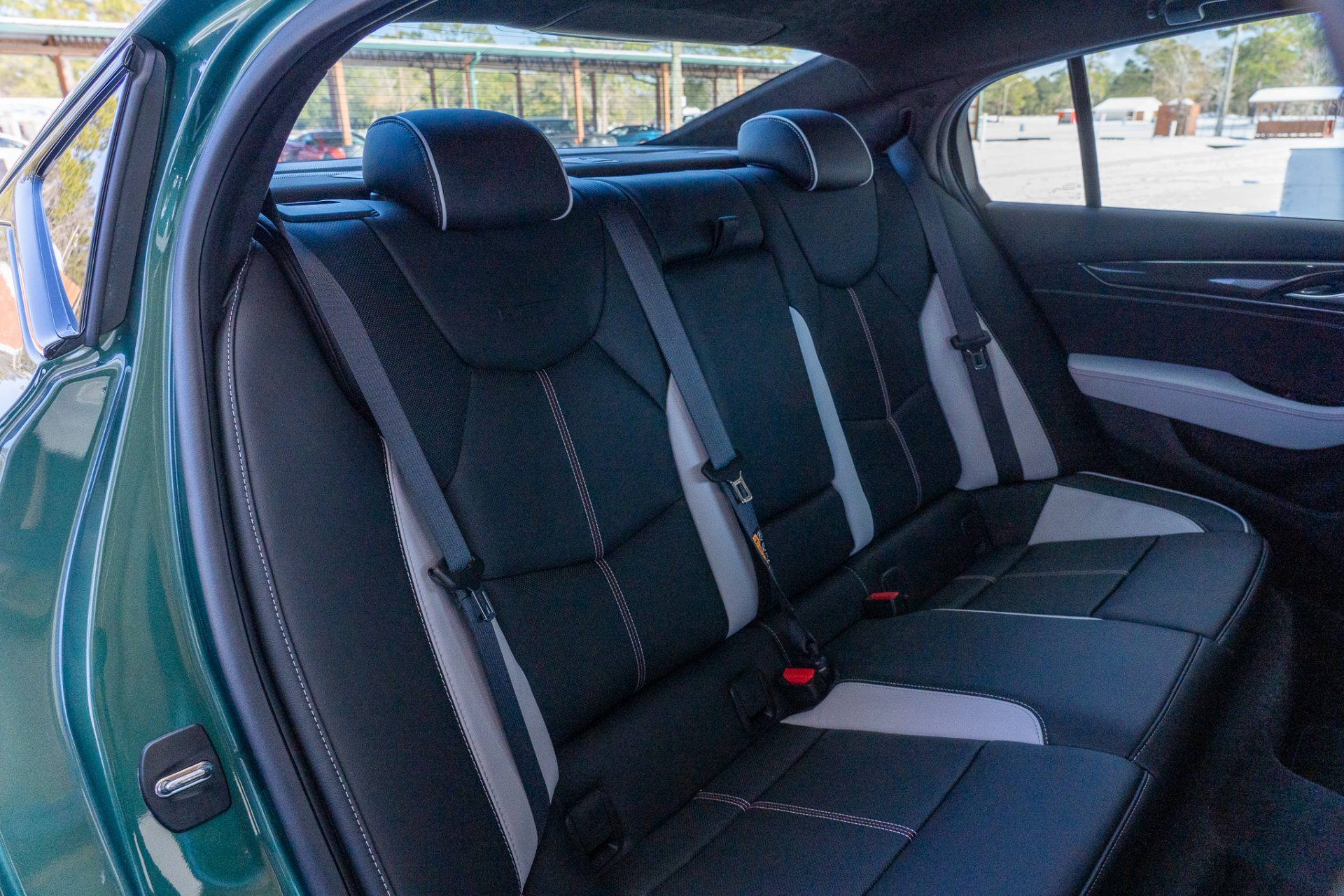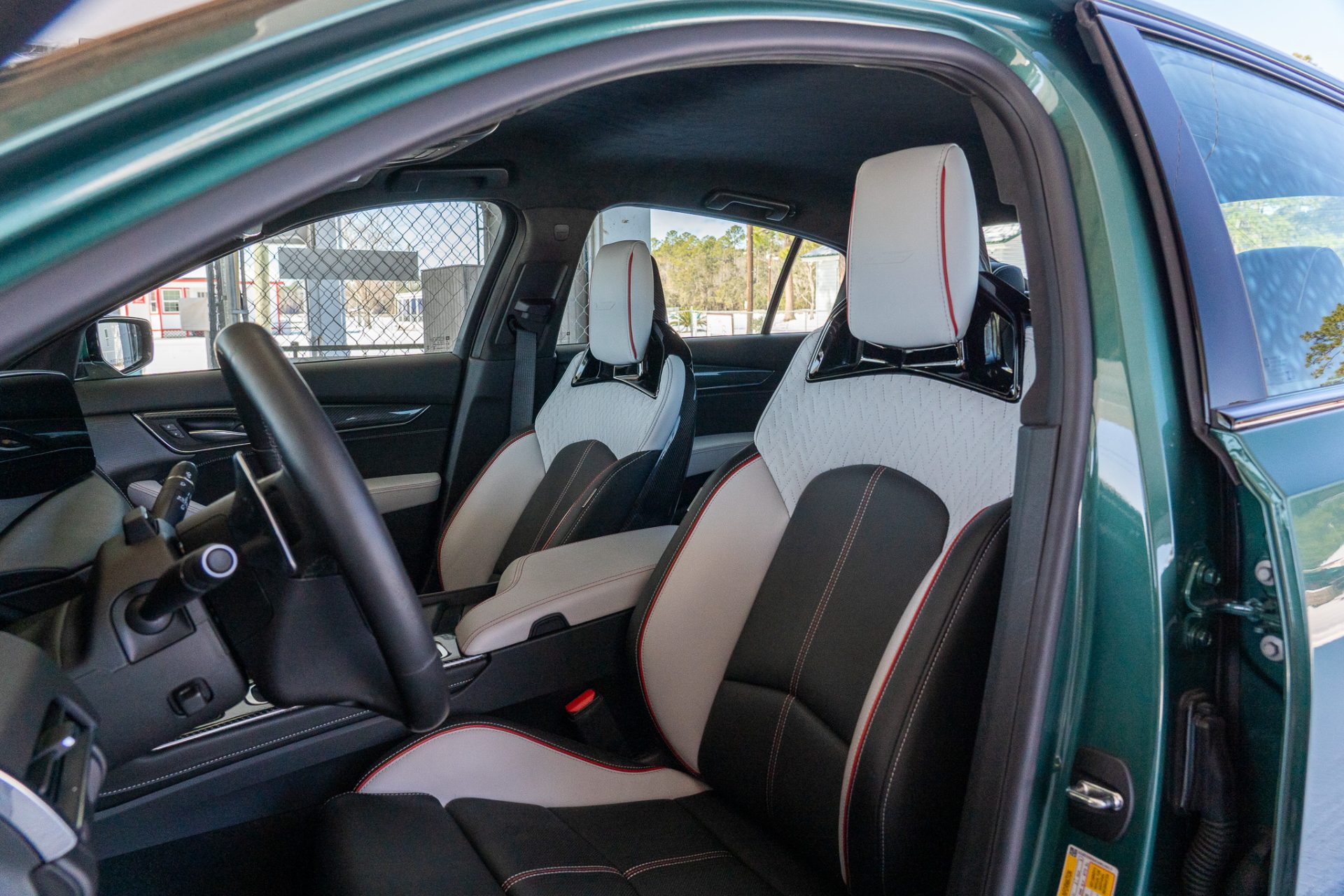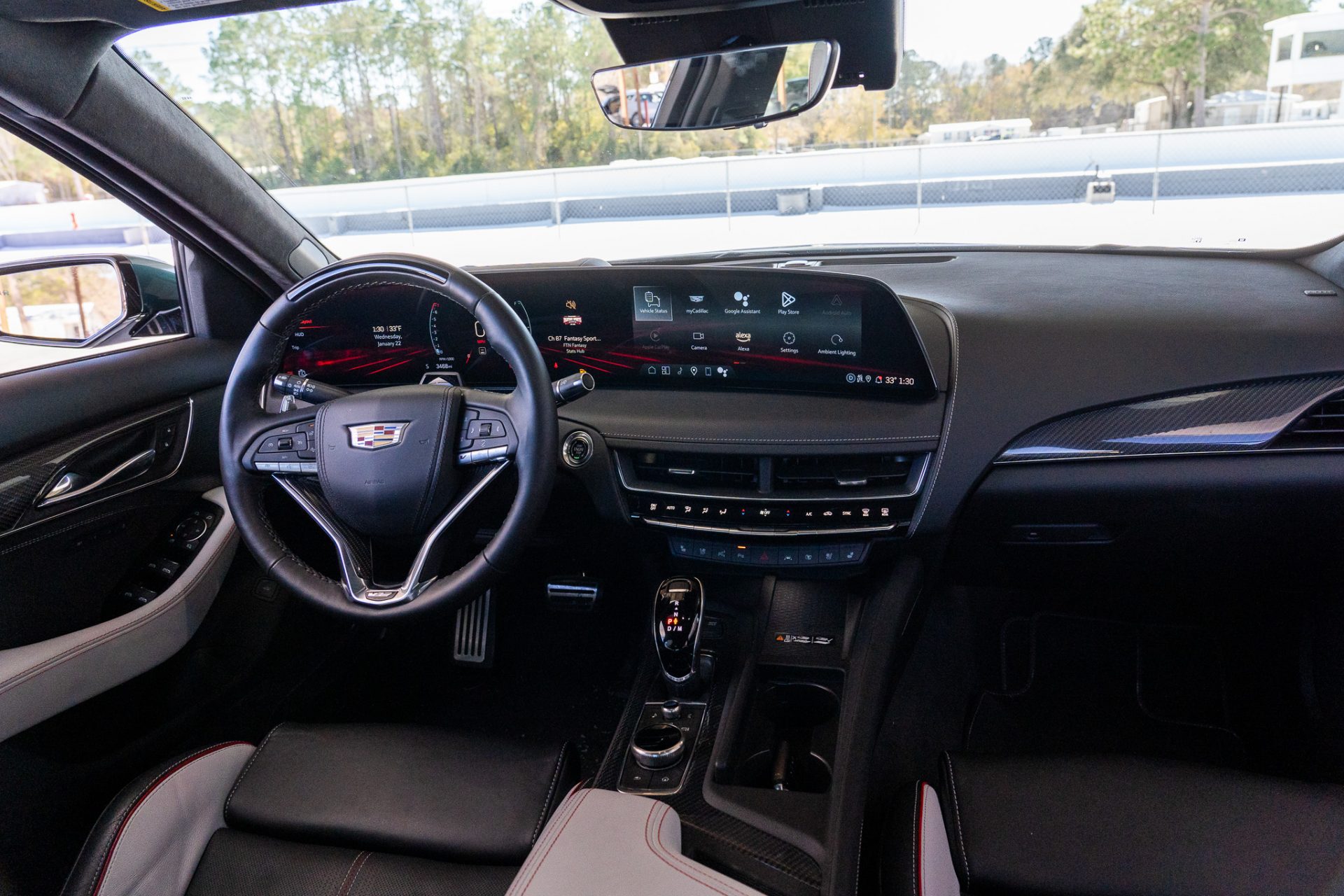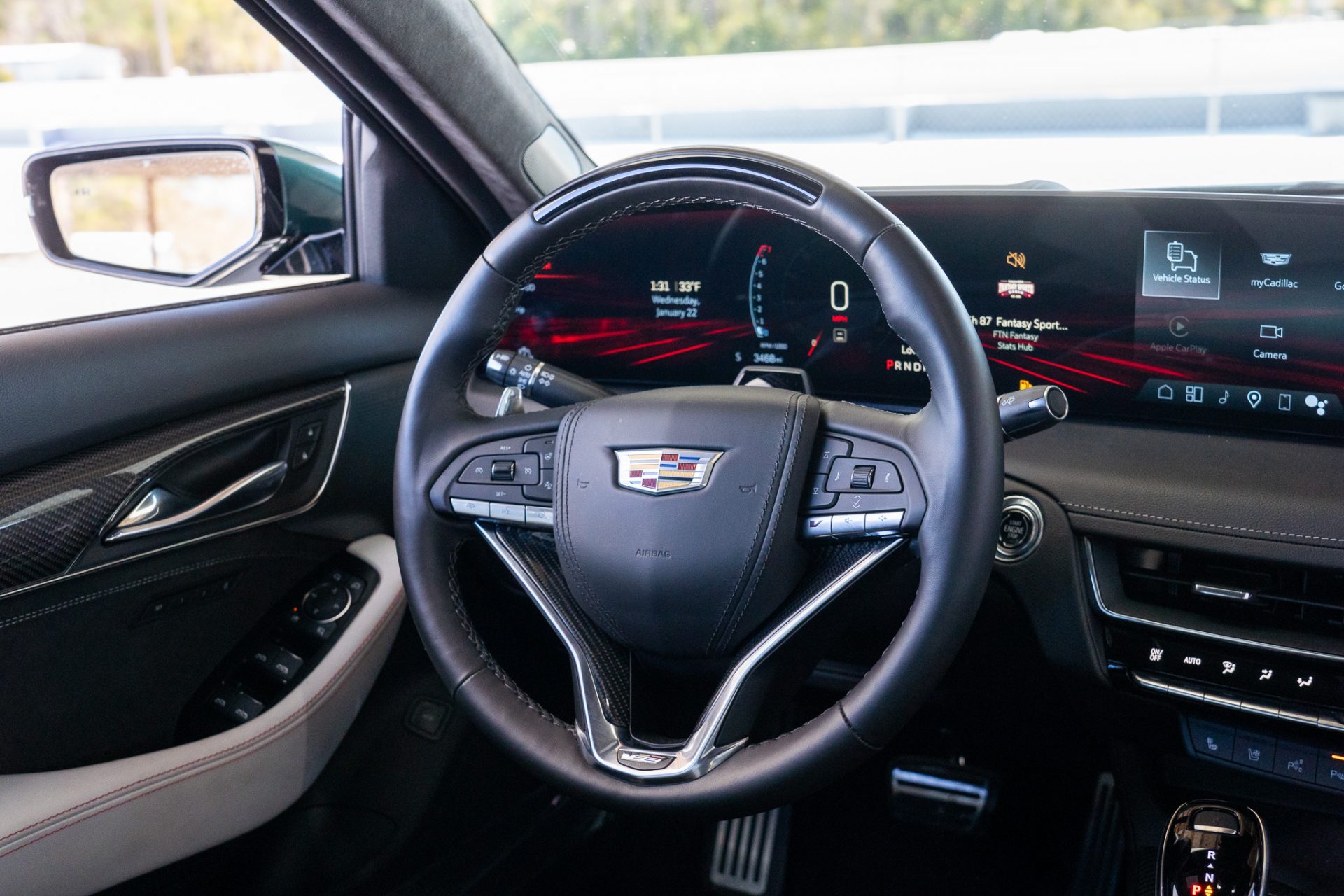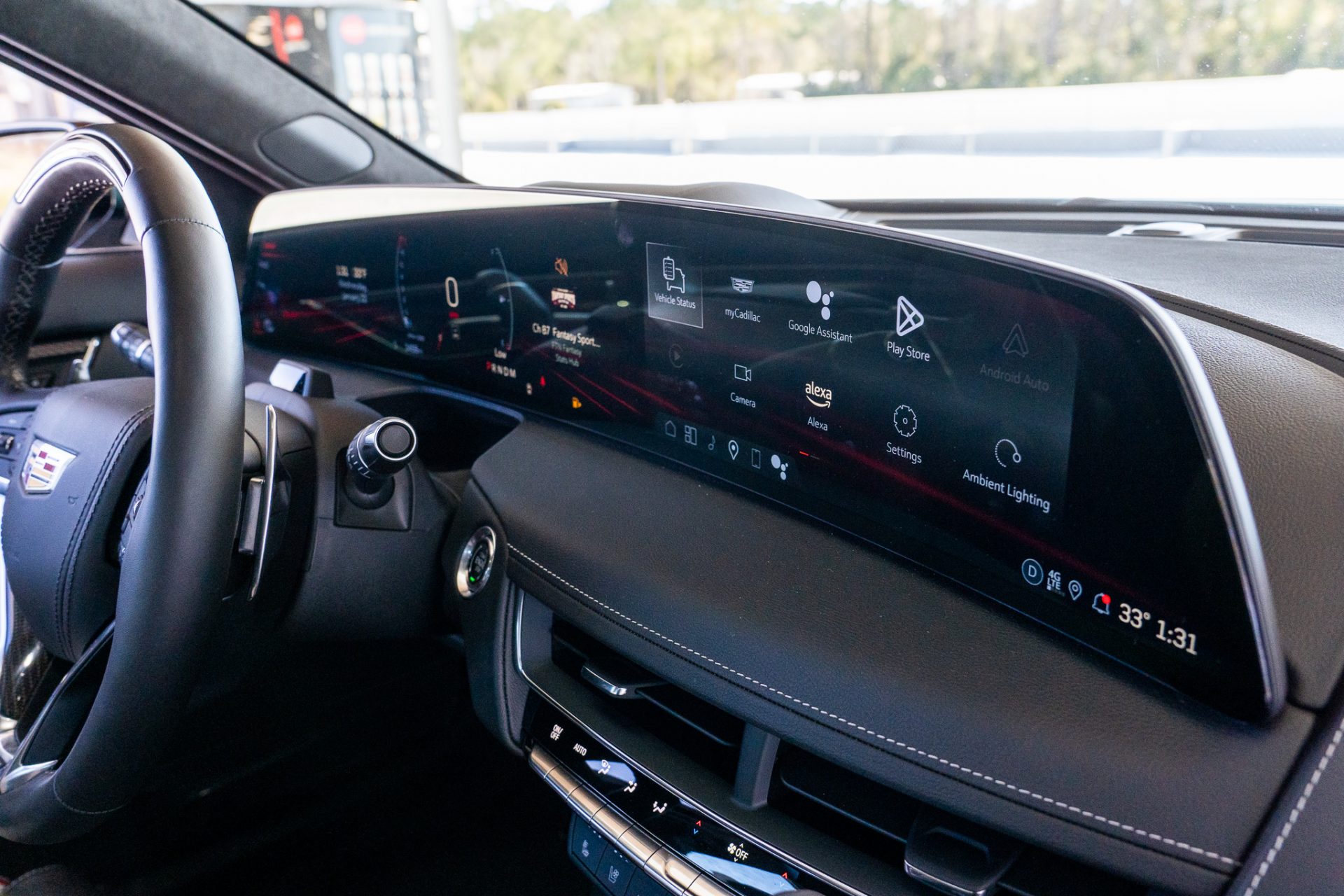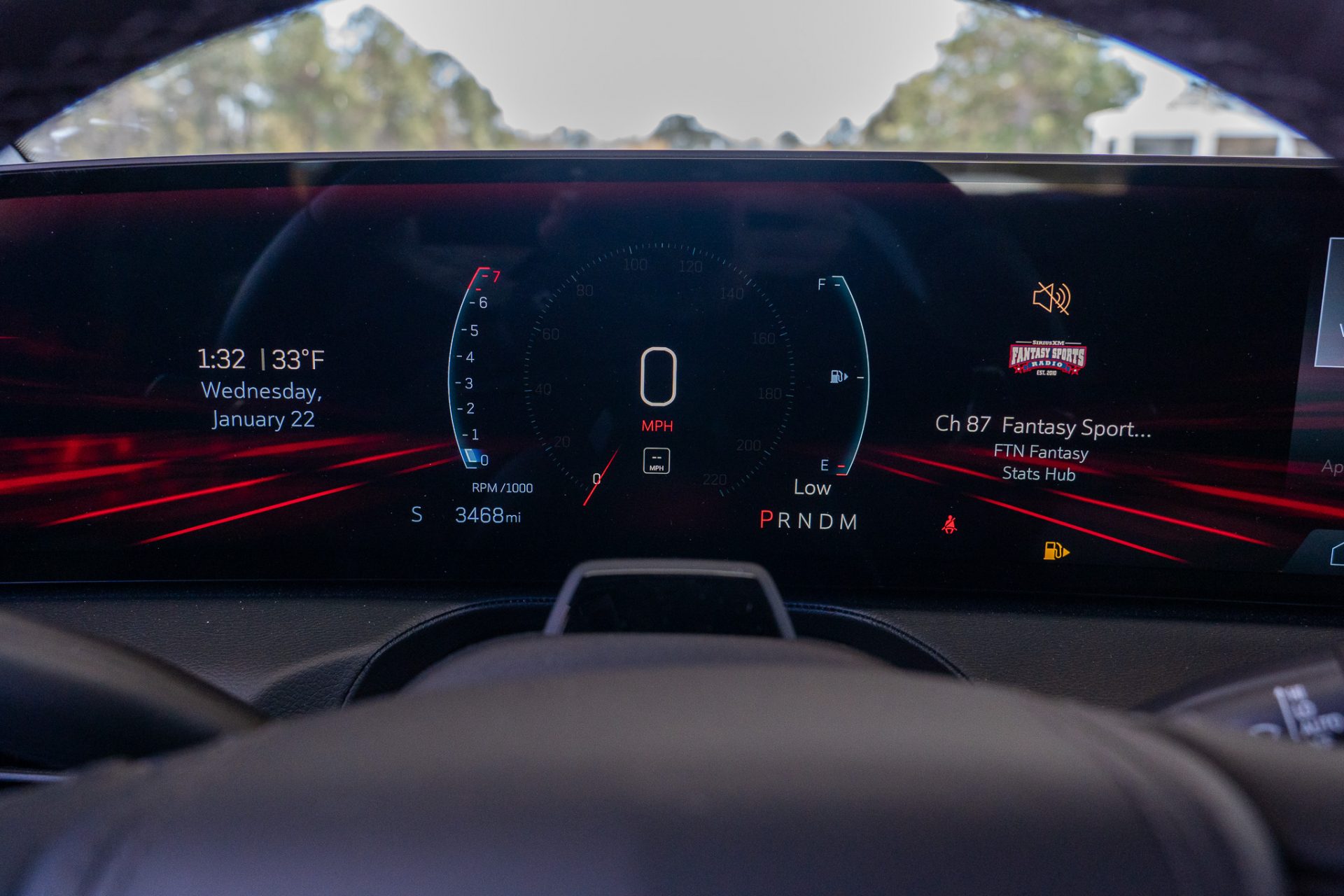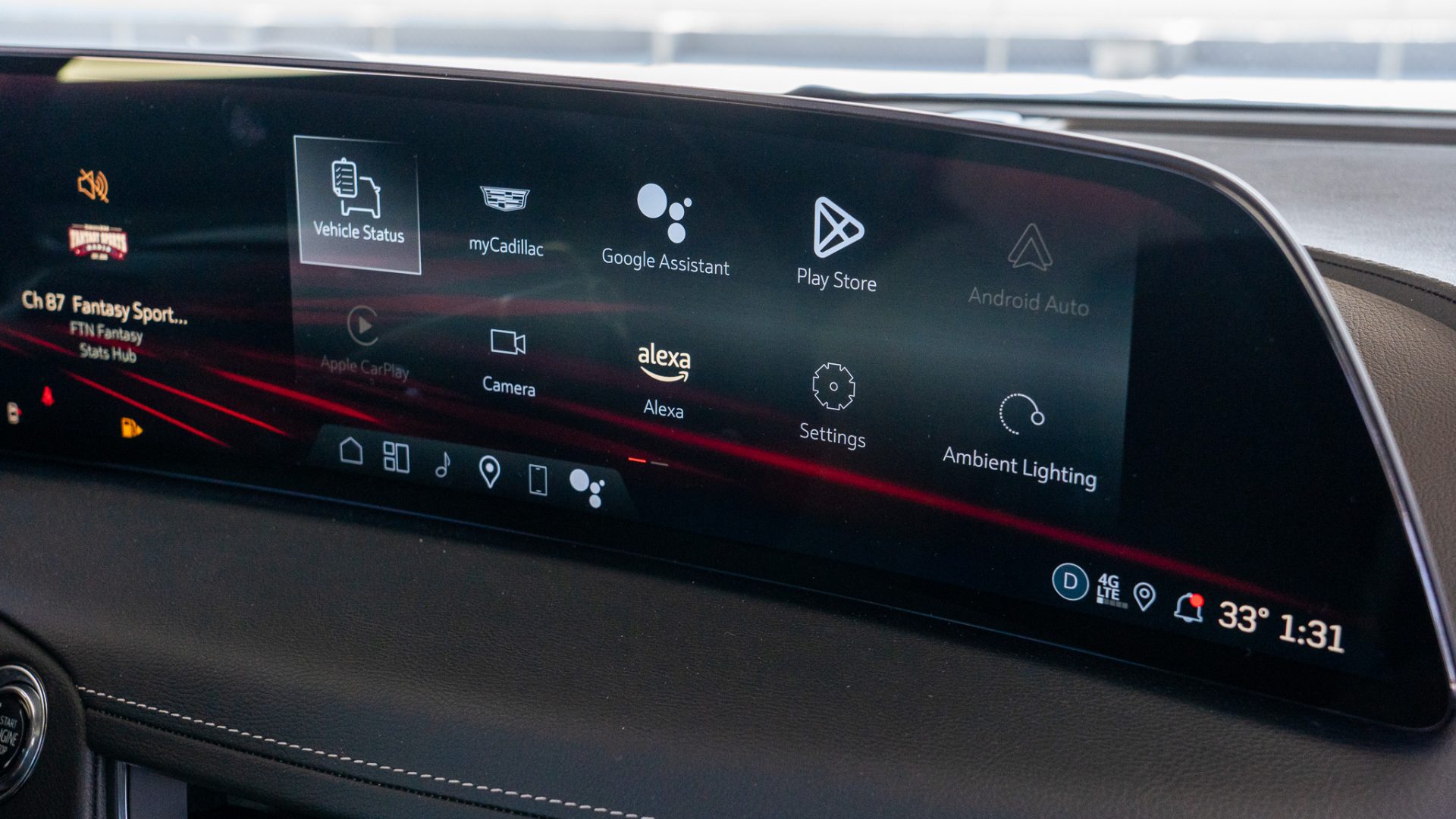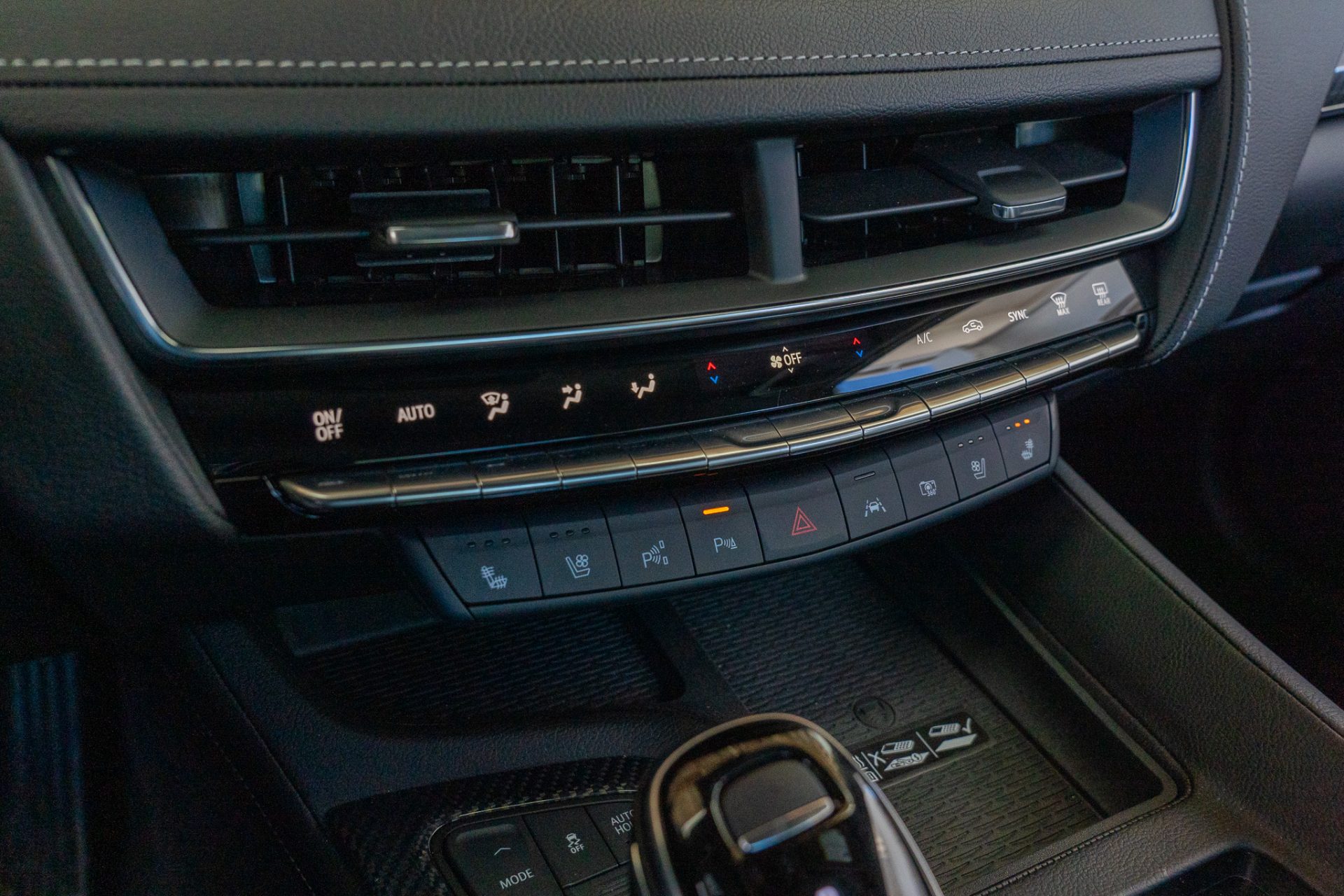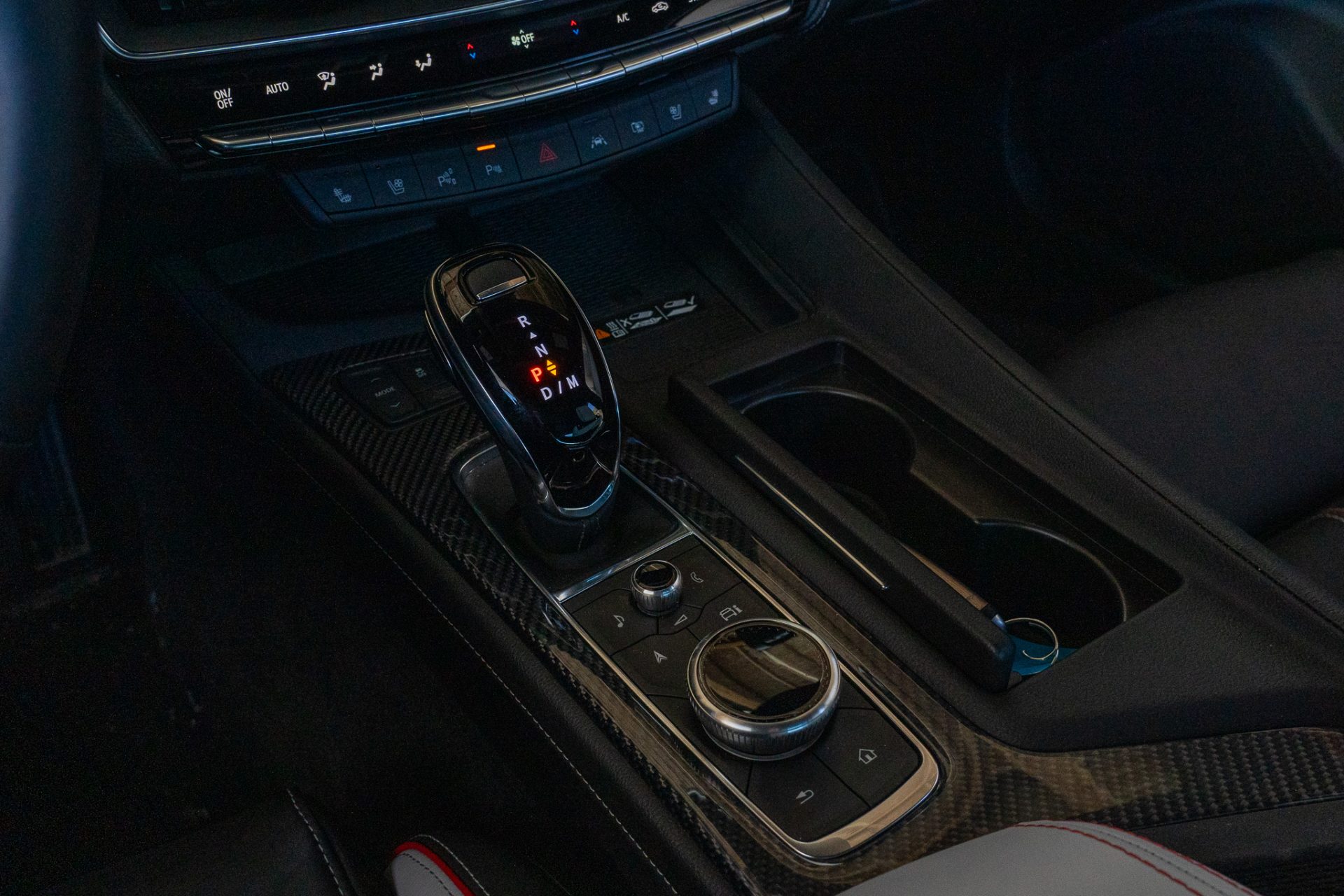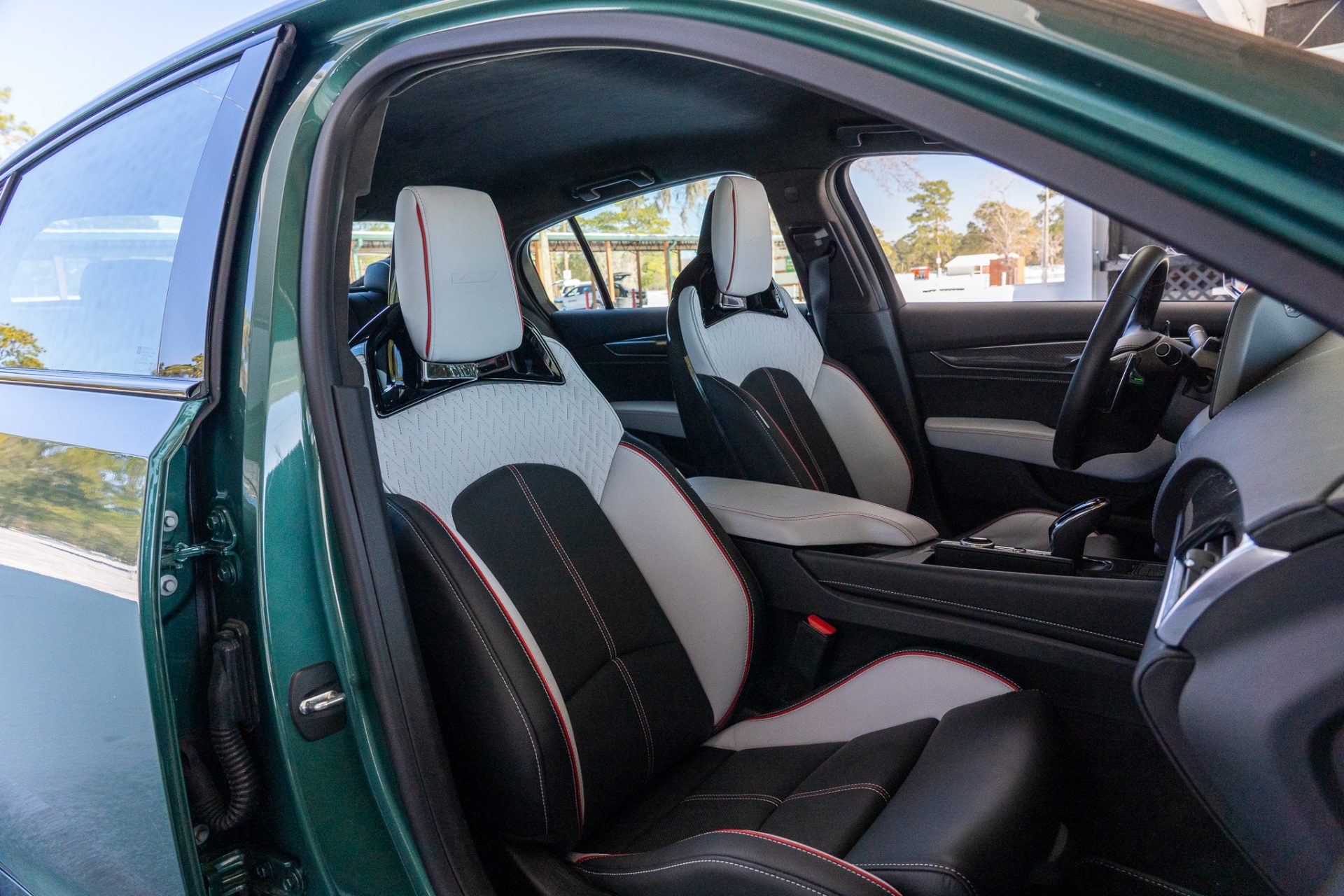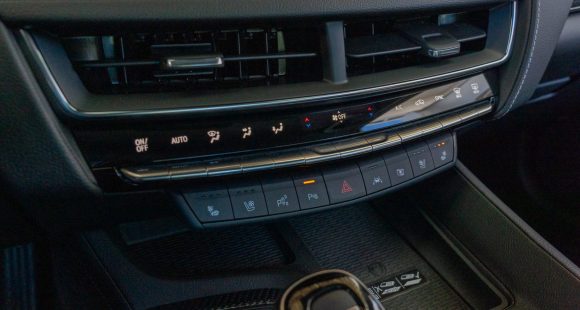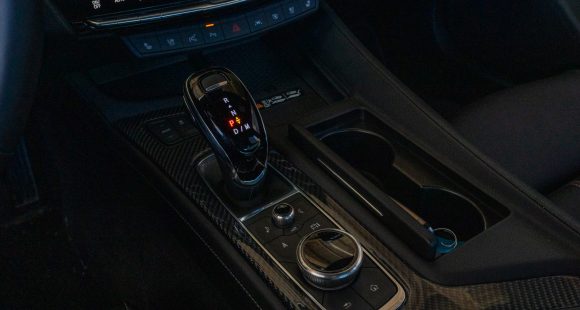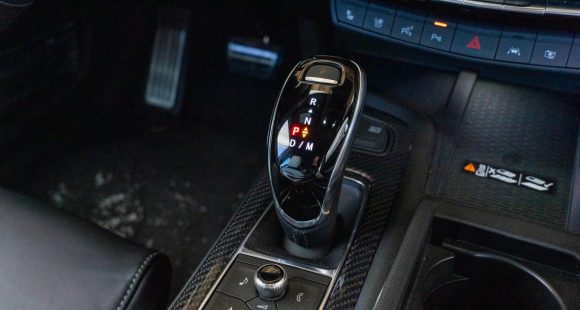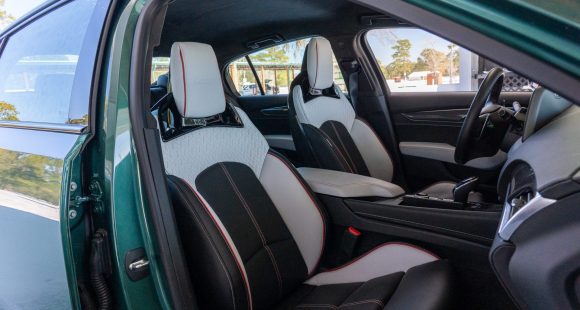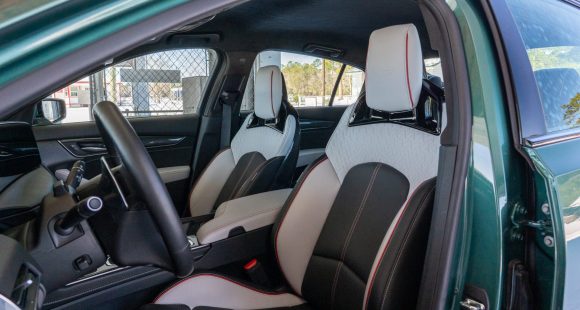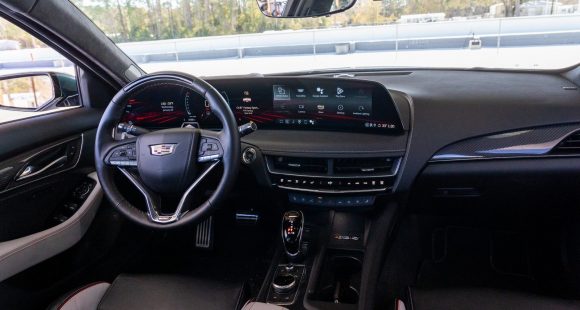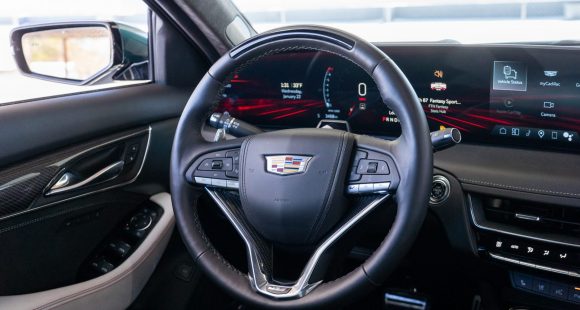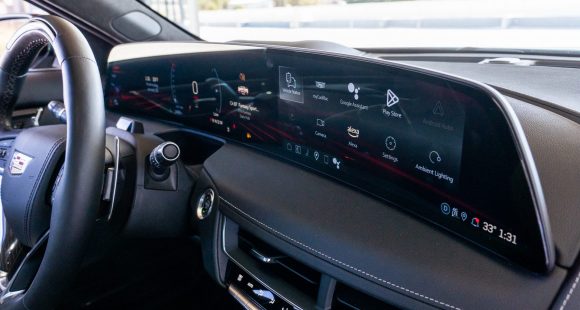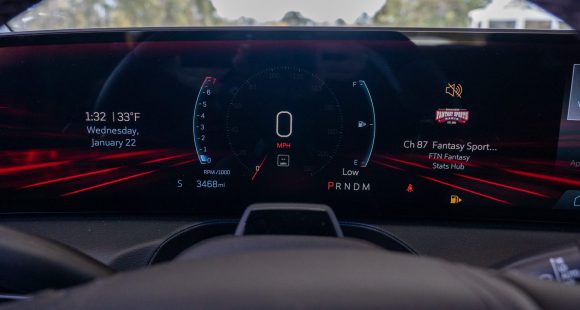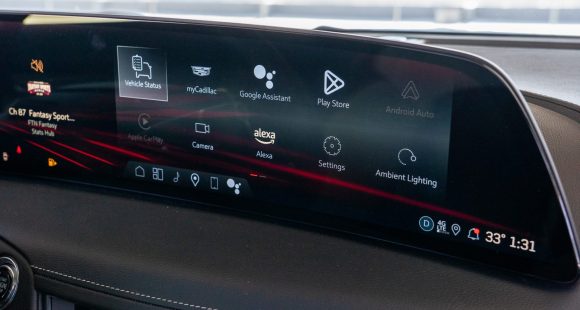2013 Cadillac ATS
Cadillac has already proven that it can build a top notch sport sedan and coupe with the CTS. But, being about the size of a BMW 5-series, the CTS is still too large and heavy for core sport sedan enthusiasts who prefer rides like the BMW 3-series, Audi A4, and Infiniti G. Well, it took a while but the all-new Cadillac ATS has those rivals squarely in its sights. So let’s see just how true Cadillac’s aim really is.
We’ll just pretend that the Cimarron never happened, and call the 2013 ATS Cadillac’s first compact sedan. It certainly is their first compact luxury-sport sedan. It’s hard to believe that a prestige brand can survive as long as Cadillac has without a worthy entry-level model. But, more than that, the rear-wheel-drive ATS looks to have the goods to go toe-to-toe with the most hallowed of all sport sedan benchmarks, the BMW 3-series.
We sure had a blast sliding this lightweight, expertly balanced Caddy around Atlanta Motorsports Park. The ATS makes you believe you’re in total control, although you know in the back of your mind, there’s a lot of ones-and-zeros helping you go fast. It’s definitely a driver’s car. The available limited-slip rear really helps get the power down whether around curves or in a straight line. On that, the ATS is not one-size-fits-all when it comes to power. There are three choices, one more than most rivals. From the 2.5-liter I4 in the base and Luxury models, to the brut in the line up, the CTS’s 3.6-liter V6 found in the Premium model. But our favorite, and likely the buyer’s too, is the Performance model’s all-aluminum, Direct Injection 2-liter turbo, with its 272-horsepower, 30 more than the 328i, and 260 pound feet of torque. Good for a 0 to 60 run of a respectable 5.7 seconds.
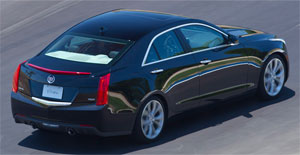 That great power is then perfectly balanced with good fuel economy at 22-City, 32-Highway, and 26 Combined. All engines don 6-speed automatic transmissions with manual shift, while the 2-liter Turbo offers a sport sedan pre-requisite 6-speed manual. While “purists” will insist on the manual, the auto is plenty responsive, and suited us just fine.
That great power is then perfectly balanced with good fuel economy at 22-City, 32-Highway, and 26 Combined. All engines don 6-speed automatic transmissions with manual shift, while the 2-liter Turbo offers a sport sedan pre-requisite 6-speed manual. While “purists” will insist on the manual, the auto is plenty responsive, and suited us just fine.
Length and wheelbase put it right amongst the competition, but at 3,400-pounds it’s lighter than most of them, thanks to extensive use of aluminum and even magnesium. Front suspension starts as typical MacPherson strut, but replaces the usual wishbone with twin ball joints and lower control links. The rear is an all-new 5-link design. Our ride’s FE3 Performance Suspension adds the limited slip rear and driver adjustable Gen 3 Magnetic Ride Control that really pulls it all together. There is electric variable steering assist, and we have no complaints as there’s a sweet amount of feedback through the wheel.
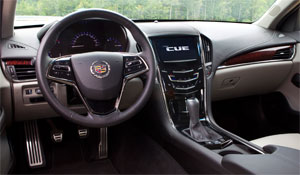 The front end is smooth. Narrow, vertical headlights with available LED accents, flank a broad grille with active shutters, accentuating width. The rear proudly features Cadillac hallmarks such as vertical LED tail lights and large wreath and crest, while nicely integrated exhaust tips add a touch of modern. Inside, there is an ultra-modern yet familiar Cadillac look. Our Performance model features sporty aluminum trim, though wood is available elsewhere in the lineup. And Cadillac’s new CUE proximity touch interface is also standard in all but the base car. We love the look and feel of CUE when sitting still, but moving, like all such systems, you need to use the best-yet voice activation to avoid too much distraction. Much like the larger XTS, gauges are a high-tech display, with a multitude of configurations. Overall interior dimensions are similar to the 3-series. That means a fairly intimate front cabin but with plenty of legroom. The rear seat in the ATS, however, is a little tight even for a sport sedan. And, the trunk is downright small at 10.2 cubic-feet.
The front end is smooth. Narrow, vertical headlights with available LED accents, flank a broad grille with active shutters, accentuating width. The rear proudly features Cadillac hallmarks such as vertical LED tail lights and large wreath and crest, while nicely integrated exhaust tips add a touch of modern. Inside, there is an ultra-modern yet familiar Cadillac look. Our Performance model features sporty aluminum trim, though wood is available elsewhere in the lineup. And Cadillac’s new CUE proximity touch interface is also standard in all but the base car. We love the look and feel of CUE when sitting still, but moving, like all such systems, you need to use the best-yet voice activation to avoid too much distraction. Much like the larger XTS, gauges are a high-tech display, with a multitude of configurations. Overall interior dimensions are similar to the 3-series. That means a fairly intimate front cabin but with plenty of legroom. The rear seat in the ATS, however, is a little tight even for a sport sedan. And, the trunk is downright small at 10.2 cubic-feet.
On the street, the ATS is very composed and super stable. More than one of our staffers felt the need to constantly remind themselves that they were driving an American made sport sedan. The 2-liter turbo has plenty of guts, little turbo lag, and likes to be revved; yet it remains quiet and smooth as you should expect from a luxury oriented brand. All-wheel-drive is available on all but base and luxury models. ATS pricing begins at a very reasonable $33,990, but we expect most will go out of the door closer to 40-grand.
Cadillac has hit the compact sporty four-door bullseye with the 2013 ATS. Now, that doesn’t mean hordes of 3-Series fans are going to trade in their twin-kidneys for a wreath and crest. But, it does mean Cadillac is now a member of a very exclusive club. And, with a V-Series and maybe even a coupe to follow, the ATS looks like a lot more than just a splash in the pan.
Specifications
- Engine: 2-liter turbo
- Horsepower: 272
- Torque: 260 lb-ft.
- 0-60 mph: 5.7 seconds
- EPA: 22 mpg city/ 32 mpg highway
2025 Rivian R1S
Major Reboot for Rivian R1S
With just about every mainstream carmaker now onboard with battery-electric vehicles, EV-only brands are hoping there are still plenty of people out there willing to think outside the box. So, let’s see if Rivians latest R1S utility can make the case for taking the EV road less traveled.
Big changes have happened in the short time since the Rivian R1S first hit the streets three years ago. As for 2025, there are updates that touch just about every aspect of the vehicle. Yes, despite looking almost exactly the same outside, Rivian claims that beneath the surface, their entire electrical architecture has been significantly updated, eliminating a whopping mile and a half of wiring and 10 computer assemblies, allowing for more efficient operation.
But look closely and you will see their signature vertical oval headlights are updated with a new matrix of LED lights that can cycle individual elements on and off to provide maximum illumination where you need it without distracting oncoming drivers.
Not much change in the look of the interior either, but the synthetic leather upholstery is still very nicely done, though most touchpoints feel more rugged than luxury minded. With the exception of a couple controls on the steering wheel, you do still have to do almost everything on the R1S’s 15.6-inch touchscreen, but the user interface has been improved. So, while we do wish they could have reverse-engineered a knob or two into the mix, we realize full touchscreen interface is just what people expect in their high-end EVs these days, and at least it works better than before. And the gauge display still wows you with the amount of information it displays and is mounted high enough that no additional head-up display is needed. A new Rivian Autonomy Platform uses 11 cameras, five radars and A.I. for self-driving, or just to monitor what’s going on around the vehicle even when it’s parked.
This [EV] really feels fast, sitting you up high and throwing you back in your seat with authority.
Rivian has also given the R1S a substantial suspension revision with new spring rates, bushings, and mounts; along with new tuning for the adaptive dampers and roll-mitigation system. It does provide a more balanced street attitude, but it still rides like a truck. That’s great if that’s the experience you’re looking for; not as ideal if you’re looking for more of the smooth luxury-style treatment.
All R1Ss are all-wheel drive, but there’s a wide variety of powertrain options including a new Tri-Motor setup. Outputs range from the standard Dual-Motor’s 533 horsepower to the Quad-Motor’s impressive 1,025. There are several battery packs as well, delivering as much as 410 miles of range, giving the R1S the highest rating of any SUV on the market right now. Our Adventure trimmed tester featured the 665-horsepower Performance version of the Dual-Motor arrangement, with the Max battery and 20-inch wheels with all-terrain tires.
Theoretically, that setup is rated for 370 miles, but perhaps we were enjoying the “performance” theme too much as our results were well short of that, using 68% of the battery to drive only 189 miles, putting our estimated range around 278 miles. Using 43 kilowatts of electricity for every 100 miles earns the R1S a fair efficiency rating.
But all was forgiven at our Mason Dixon test track when this Rivian started blasting us to 60 in 3.8 seconds. Yes, there are faster EVs, but this one really feels fast, sitting you up high and throwing you back in your seat with authority, while the rear of the truck squats down substantially before hurling you off the line and down the track. Power delivery stayed strong the entire time, cranking away until we cleared the quarter-mile in 10.5 seconds at 108 mph.
Despite this utility’s substantial size and weight, we were able to keep a pretty fast pace through the cones of our handling course. The all-terrain tires obviously didn’t grip the pavement as well as all-seasons would, but the low center of gravity kept things very flat. Yes, it does feel very heavy, but the brakes were more than up to the task, stopping us from 60 mph in a very short 103 feet with surprisingly little nosedive and no fade.
Pricing starts at $77,700 for the Dual-Motor with Standard battery pack; our Dual-Motor Performance with the Max battery and All-Terrain Package came in just over $102,000.
While Rivian has had great initial success; sustaining that success will be a much tougher task. But, if they continue to put as much effort into improving their products as they have here with the 2025 R1S, we think their winning streak will only accelerate.
Specifications
As Tested
- Motor Setup: Dual Motor
- Battery Size: 141.5 kWh
- Horsepower: 665
- Torque: 829 lb-ft
- EPA Range: 370 miles
- 0-60 mph: 3.8 seconds
- 1/4 Mile: 10.5 seconds at 108 mph
- Braking, 60-0 (avg): 103 feet
- MW Test Loop: ~278 miles
2025 Cadillac CT5-V Blackwing
Bangin’ Corvette Disguised As Old Man’s Luxury Sedan
It was just 3 years ago that we stormed around the nine highspeed turns of Savannah’s Roebling Road Raceway in the then-new Cadillac CT5-V Blackwing. We loved everything about that remarkable beast of a sport sedan. Well since then, Cadillac has made the big boy Blackwing even better! So, we’re headed back to Roebling to check it out.
Roebling Road Raceway is a high-speed track that suffers no pretenders, and this 2025 Cadillac CT5-V Blackwing gets around about as fast as any exotic hardware we’ve tested here; certainly, faster than anything else you can comfortably haul a foursome to the country club for 18 holes in, and it sounds wicked while doing it.
Media types love to hype “last of the breed” scenarios, and when this Beast from the Midwest rolled onto the scene for 2021, there were many predictions it would be the “last great V8 sedan.” Well, we’re not into doomsday predictions or prepping for that matter, we’re into enjoying every car as much as we can whenever we can, and the CT5-V Blackwing seems to be of like mindset, feeling right at home both overpowering Roebling’s corners and streaking wide open down its long front straight. It’s hard not to enjoy the ridiculousness of it all, as that raucous V8 is sounding NASCAR, but the car is feeling much more like a world-class sport sedan.
It’s a Corvette motor, something that goes all the way back to the original Cadillac CTS-V from 2004. Things got serious in ‘09 when it starting making well over 500 horsepower and breaking Nürburgring records. Fast forward to now and the CT5-V Blackwing’s hand crafted and supercharged 6.2-liter roars to life in a way that seems to overpromise, but when you tap into its 668 horsepower and 659 lb-ft of torque, you quickly realize it can back it up. If, for some reason, it’s too much for you, there are quieter exhaust settings.
Our original CT5-V Blackwing test 3 years ago featured the six-speed manual, so in the interest of fairness, we opted for the 10-speed automatic this time around; it’s quicker to 60 by two-tenths of a second, according to Cadillac, at 3.4 seconds. But an unintended consequence of the Blackwing’s Vortex of Awesomeness is that it unexpectedly sucked a winter storm into coastal Georgia and covered the track with snow before we could record our own straight-line numbers.
Spot-on steering, solid brakes, and gobs of torque [are] readily available.
Fortunately, we did get plenty of laps in before that happened, and the 10-speed provided lightning quick shifts, with noticeably tighter gearing than the manual. It’s always a unique kind of joy to thrash a Cadillac around a racetrack, but this one seems more up to the task than any Cadillac to this point; spot-on steering, solid brakes, and gobs of torque readily available regardless of what number the tach needle is pointing at or what gear you’re in.
Our test car came wearing Typhoon Metallic, one of three new color choices available for ’25. What else is new? Well, the front end gets a tougher look, along with improved aerodynamics from reshaped ground effects and front fenders. LED lighting is upgraded inside and out. There’s an updated Carbon Fiber Package, and new quad trapezoid exhaust tips.
About the only other thing that changes in here is fitment of Cadillac’s 33-inch widescreen display. And while plenty of V performance cues remain, your senses still take in the best of Cadillac luxury. Though connecting with GM’s Performance Data Recorder, which has been enhanced with a better interface and real-time lap delta, reminds you just how serious Cadillac takes Blackwing performance.
Government Fuel Economy Ratings are 13 City, 20 Highway, and 15 Combined. CT5-V pricing starts at $58,390; and that’s for a 360-horsepower, twin-turbo V6 which is pretty incredible in its own right, and you can you even add all-wheel drive to that one. This CT5-V Blackwing just takes it to a significantly higher level and starts at $99,090. Get ‘em while you can.
Predictions of the gasoline engine’s demise over at Cadillac were perhaps a little premature, as there’s plenty of people who still like their sport sedans loud, V8 powered, and supercharged. And while there will probably always be high-performance Cadillacs, it’s doubtful any will be able to deliver the full sensory overload kind of experience found here in the 2025 Cadillac CT5-V Blackwing, a world-class sport sedan that beats with pure American muscle and can hang with any driving machine out there, ultimate or otherwise. If only everything could feel this real forever.
Specifications
As Tested
- Engine: 6.2-liter Supercharged V8
- Transmission: 10-speed automatic
- 0-60 mph (est.): 3.4 seconds
- Horsepower: 668
- Torque: 659 lb-ft
- EPA: 13 City | 20 Highway | 15 Combined









